Informative articles for entrepreneurs and business owners to help with their online marketing, social media and grow their brand
Don't wanna be here? Send us removal request.
Text
The Benefits of Brand Positioning for Small Businesses

In today’s bustling marketplace, where consumers are bombarded with choices, it can seem practically impossible for small businesses to survive when they’re up against industry titans and their multimillion-dollar marketing budgets.
To be fair, small businesses like yours are unlikely to become direct competitors of these behemoths, but you can still leverage the same strategies they use in their marketing.
And one of the most powerful tactics they use is what’s known as brand positioning.
In case you’re not sure what that means, in a nutshell, brand positioning is the process of defining how your brand is perceived in the minds of your target audience and differentiating it from competitors by highlighting your unique value, benefits, and identity.
I know this term might seem like some sort of corporate buzzword, but the truth is it’s one of the most effective ways to make your brand stand out, no matter how small your business might be.
In my experience, the issue here is that business owners either don’t know what brand positioning actually is or they think it’s something that’s only used by corporate giants.
But the benefits of brand positioning aren’t a luxury reserved only for Fortune 500 companies.
And for small businesses operating with limited resources, effective brand positioning isn’t just beneficial – it’s vital for both survival and growth.
Because when you position your brand by clearly articulating what your business is, whom it serves, and why it matters, your marketing becomes much more effective and efficient, and it creates a foundation upon which all your other marketing activities will be built.
Without this foundation, your marketing efforts will be like scattered seeds thrown to the wind – some may take root, though most will be wasted.
But with proper brand positioning, those same efforts become more like precisely targeted arrows, which can hit their targets more consistently and effectively.
So, if you’re looking to boost your small business brand strategy, and you’re interested in the benefits of brand positioning for small business, then this article is for you.
What Are the Benefits of Brand Positioning for Small Business?
At its core, brand positioning answers three critical questions: who you are as a business, who your ideal customers are, and why those customers should choose you over alternatives.
And if you allow this strategic foundation to guide all your marketing and branding efforts, it will provide a ton of benefits for your small business, including:
Enhanced Clarity and Focus
One of the biggest benefits of brand positioning for small businesses is the clarity it provides.
Because when you define your brand positioning, you’re basically creating a roadmap for your business that highlights:
Which market segments to target
Which customer needs to address
Which messaging will resonate
Which competitors to monitor
This clarity eliminates the scattered approach that many small businesses fall victim to.
And instead of trying to be everything to everyone, which is a strategy that inevitably leads to being nothing special to anyone, properly positioning your brand forces you to make strategic choices about where to focus your limited resources.
For example, a local bakery might position itself as specializing in authentic French pastries made with organic ingredients.
This positioning naturally guides decisions about ingredients, recipes, store design, pricing strategy, and marketing messages.
But without this positioning, the bakery might waste resources trying to compete with grocery stores on price or with other bakeries on variety, rather than emphasizing its own unique strengths.
More Efficient Marketing and Communication
When your brand positioning is well-defined, your marketing becomes significantly more efficient.
As a result, every message, visual, and campaign will naturally align with your core brand positioning, creating consistency that builds recognition and trust over time.
Having said that, here’s how this kind of efficiency can benefit your business:
Your messaging becomes more compelling because it’s targeted to specific customer needs and preferences
Your creative decisions become more straightforward because they flow from your brand positioning strategy
Your marketing spend generates better returns because it reaches the right people with the right message
Your customer communications develop a distinctive voice that becomes recognizable in the marketplace
In any case, small businesses with limited marketing budgets will benefit from this efficiency because rather than spreading their resources thinly across generic marketing efforts, they can concentrate on targeted initiatives that speak directly to their ideal customers.
Consider a local plumbing company that positions itself as “the eco-friendly plumbing experts”.
This positioning naturally shapes their content marketing (e.g. water conservation tips, eco-friendly product reviews), advertising imagery (e.g. natural elements, green colours), and even service offerings (e.g. water-saving fixture installation, tankless water heater expertise).
Moreover, this kind of positioning ensures that every marketing dollar spent reinforces a consistent message that attracts environmentally conscious homeowners.
Premium Pricing Opportunities
Arguably, one of the biggest financial benefits of brand positioning for small businesses is being better equipped to command premium prices.
Because when customers perceive your business as offering unique value that your competitors can’t provide, they’ll be willing to pay more, and here’s why:
Perceived specialization: Businesses positioned as specialists rather than generalists can charge more for their expertise.
Emotional connections: Strong brand positioning often creates emotional bonds with customers who will pay more to maintain that relationship.
Unique attributes: When positioning highlights truly distinctive features or benefits, customers are willing to pay for that differentiation.
Consider a local hardware store positioned as offering expert guidance from seasoned craftsmen.
This store can charge slightly higher prices than its big-box competitors because customers value the personalized knowledge and advice that comes with their purchase, which is a benefit that extends beyond the physical products themselves.
At any rate, this kind of brand positioning communicates expertise that justifies premium pricing.
Read: Crafting a Unique Selling Proposition: Unleashing the Power of Your Brand

If you want to experience all the benefits of brand positioning, you’re going to have to define your unique selling proposition, otherwise known as your USP.
Your USP is incredibly important, and it goes hand in hand with your brand positioning, as it details everything that sets you apart from the competition.
With that in mind, this article explores the benefits of developing your USP and explains how to create one for your business.
Keep reading here.
Customers Who Are More Loyal
Well-positioned brands tend to enjoy much greater loyalty from their customers.
Because when your positioning resonates with a specific audience’s needs, values, or aspirations, you create deeper connections that transcend transactional relationships.
And when you create this kind of relationship with your customers, you’ll experience more:
Forgiveness when minor issues arise
Repeat purchases over extended periods
Customer advocacy and word-of-mouth referrals
Resistance to competitive offers, even when they might be less expensive
For small businesses, this loyalty is particularly valuable, as their customer acquisition costs are relatively higher compared to those of larger companies.
Moreover, the longer a customer stays with your business, the more profitable that relationship tends to become.
A bookstore that positions itself as a community hub for literary events, for instance, transforms simple book purchases into a sense of belonging.
As a result, customers will return, not just to buy books, but for the experience and the community.
Better Decision Making
Brand positioning doesn’t just help to clarify your external communications – it also provides invaluable guidance for internal decision making.
Because when everyone in your organization understands your positioning, they can confidently make decisions that they know will be aligned with your brand.
And this can have a positive effect on everything from your product development and service enhancements to employee hiring and training, customer service protocols, and even investment decisions.
For example, if your small accounting firm positions itself as providing jargon-free financial guidance for creative entrepreneurs, this positioning would influence how you train staff to communicate, which services you prioritize developing, and even the design of your office space.
What’s more, this alignment reduces costly missteps and inconsistencies.
For instance, a restaurant positioned around farm-to-table dining would think twice before adding processed food items to their menu, even if it might generate a lot of short-term revenue.
Competitive Differentiation
Believe it or not, most small businesses operate in highly competitive environments.
But brand positioning can help you to create meaningful differentiation that helps you stand out, even in crowded markets.
Effective positioning highlights what makes your business uniquely valuable to certain customers, creating mental space between you and competitors in customers’ minds.
And this differentiation is critical for small businesses that cannot compete on scale or resources.
The key to this kind of differentiation is making sure your brand positioning:
Aligns with your authentic strengths
Addresses genuine customer needs
Remains insufficiently served by existing competitors
Can be credibly claimed and defended by your business
For example, a local coffee shop might struggle to compete with national chains on convenience or price, but it could develop distinctive positioning around direct-trade relationships with specific coffee farmers, creating a story and experience that no other chain can replicate.
Focused Innovation and Growth
In my experience, one of the biggest benefits of brand positioning, particularly as it pertains to small businesses, is that it allows you to understand what makes your brand unique.
This gives you much greater confidence when deciding when or where to innovate, as you can identify opportunities that strengthen rather than dilute your brand positioning.
And all of this can help your company experience more stable growth in the long run, as you can more confidently create:
New products or services that are aligned with your positioning
Enhanced customer experiences that reinforce your brand promise
Strategic partnerships with complementary brands that share your target audience
For instance, a small business offering personalized fitness coaching might expand into nutrition planning, recovery therapies, or specialized equipment, as these all reinforce rather than confuse their position as personalized wellness experts.
And a children’s toy store positioned around educational play might extend into after-school enrichment programs, parent workshops on development through play, or a curated subscription service featuring educational toys, as all these innovations leverage and strengthen their core brand positioning, rather than diluting it.
This focused approach to innovation is particularly valuable for small businesses with limited resources for research and development.
Do you want to reap the benefits of brand positioning? Why not set up a free 30-minute consultation with me so we can work together to define your unique brand positioning strategy?
To your business success, Susan Friesen
P.S. If you liked the article, you might want to subscribe to our newsletter. We publish tons of valuable content to help you learn more about marketing, and subscribing is the best way to ensure you don’t miss out. Additionally, if you’d like to learn more about building a search engine optimized website, click here for our free website guide.
0 notes
Text
How to Create Engaging Website Content That Captivates and Converts

Your website might look sleek and professional, but if you don’t have engaging website content, chances are, it’s not going to drive the results you want.
The truth is people don’t visit your website to admire its design elements, regardless of how beautiful they might be.
They come looking for solutions, answers, and something of value.
And if your content doesn’t immediately communicate a strong brand position that resonates with their wants, needs, desires, pain points, or frustrations, then they’re likely to choose one of your competitors instead.
Having said that, engaging website content is more than just well-written text, and it requires you to make an emotional and/or intellectual connection with your audience.
It should speak directly to their challenges, offer clear solutions, and guide them toward taking action – whether that’s making a purchase, booking a consultation, or signing up for your newsletter.
Without this connection, even the most beautifully designed website can fall flat. And unfortunately, you don’t have much time to make that connection, either.
According to a University of Missouri study, users will form a first impression after looking at your website for less than two-tenths of a second.
What’s more, the study found that people spend about 2.6 seconds looking at a website before focusing on a specific section and an average of 180 milliseconds “fixating” on a particular section before moving on.
And this puts in perspective just how little time you have to make that first impression and let the user know they’re in the right place.
So, if you’re wondering how to make your website more engaging, or you’re searching for a more effective website content strategy, then you’re not going to want to miss this article.
How to Create Engaging Website Content
After spending over two decades building websites, I’ve learned firsthand how difficult it can be to create truly effective website content.
So, I wanted to write something explaining how to create content that grabs people’s attention, keeps visitors engaged, and drives meaningful conversions.
With that in mind, I’ve put together this list of tips to help you write the most engaging website content possible, so you can ensure your website will captivate and convert.
Understand Your Audience
Before you write a single word, you need to have a deep understanding of who your audience is.
Many businesses make the mistake of writing generic content that tries to appeal to everyone, but this approach leads to content that resonates with no one.
If you want to truly engage your audience, you need to address their specific challenges, aspirations, and desires.
Understanding your audience begins with research, and you can start by looking at your existing customers to identify common characteristics.
What are their pain points? What goals are they trying to achieve?
And if you’re not sure, try digging into customer feedback, reviews, and social media discussions to see what they’re talking about.
In any case, once you have a clear picture of your audience, your content should be framed in a way that speaks directly to them.
For instance, instead of simply listing your products or services, try focusing on the transformation they’ll provide for the members of your audience.
And if your audience is struggling with a problem, make it clear that you understand their frustration and then position your solution as the answer they’ve been looking for.
Use Headings That Instantly Capture Attention
The main heading on your home page is the first thing visitors see, and if it doesn’t immediately grab their attention, they may not bother reading anything else.
With that in mind, your headings should be clear, compelling, and benefit-driven, and they should tell the reader exactly what they can expect and why it’s worth their time.
A vague or uninspiring heading, or worse yet, one that says something like, “Welcome to my website!” can cause visitors to leave before they’ve even had a chance to engage with your content.
So, instead of using something generic like “Naturopathic Services” it’s better to be more specific and engaging.
A heading that says “Feel Whole Again – Wholistic Solutions for Your Perimenopause Journey” is much more effective, as it immediately tells the reader they are in the right place, what to expect, and gives them a reason to keep reading.
And if you’re looking to make your headings even more effective, you should consider incorporating curiosity, urgency, or a bold promise.
For example, a heading that teases valuable information, like “The Secret to Being Energized, Healthy, Rested, and Feeling Like Yourself Again” is far more likely to captivate and convert than a bland statement.
Read: 5 Tips for Creating the Best Website Content Strategy

If you want to create engaging website content, you’re going to need some sort of strategy.
Otherwise, you’ll just be throwing stuff at the wall and hoping it sticks, and that’s not likely to provide the kind of results you need.
With that in mind, this article offers several tips on how to create the best website content strategy, like doing a brand analysis, conducting keyword research, and more.
Keep reading here.
Write in a Conversational and Engaging Tone
One of the biggest mistakes businesses make is writing in a corporate or overly formal tone that feels impersonal.
Your website should feel like a conversation with your audience, rather than some kind of dry sales pitch.
I’ve found that the best way to create engaging website content is to write as if you’re speaking directly to a real person.
You should also avoid jargon, overly complex language, or stiff phrasing, and instead, try using natural language that feels more approachable and relatable.
A good rule of thumb for this is if you wouldn’t say something in a real conversation, then you shouldn’t write it on your website.
In any case, people are more likely to engage with content that feels personal and authentic versus content that sounds robotic or overly polished.
Another effective way to create a conversational tone is to frequently use the word you, as addressing the reader directly makes the content feel more personal and engaging.
For example, instead of saying, “Our company provides innovative solutions,” try shifting the focus to the reader by saying something like, “Struggling to grow your business? We’ll help you find the solutions that work for you.”
Create Content for Readability and Engagement
Website visitors don’t read content the same way they would a book or an article in a magazine – they skim.
And if they land on a page that’s filled with long, unbroken blocks of text, they’re likely to feel overwhelmed and move on, which is why structuring your content for easy readability is essential.
With that in mind, you should use subheadings to break up your content into digestible sections.
Each section should have a clear purpose and make it easy for readers to find the information they’re looking for.
Shorter paragraphs also improve readability and prevent the page from looking too dense.
When appropriate, you can also use storytelling to make your content more engaging.
People connect more easily with stories, so incorporating real-life examples of customer success stories can make your content more relatable.
And if you’re explaining a complex concept, framing it as a story rather than a dry explanation can make it more interesting and memorable.
Incorporate Strong Calls to Action
Creating engaging website content isn’t just about keeping people on your site – it’s about guiding them toward taking a specific action.
So, whether you want visitors to sign up for your newsletter, book a consultation, or make a purchase, your content should make that next step clear and compelling.
A strong call to action (CTA) should be specific and action-oriented, so instead of using vague phrases like “Learn More” or “Click Here” it’s better to use clear and persuasive language that emphasizes the benefits of taking action.
For instance, a CTA like “Get Your Free Consultation Today and Start Growing Your Business” gives visitors a reason to act.
Placement is also crucial, so your CTAs should be strategically placed throughout your content, and not just at the bottom of the page.
Because if a visitor has to scroll all the way down to see a CTA, there’s a good chance they’ll end up missing it entirely.
But if you naturally integrate CTAs throughout your content, you’ll make it easier for visitors to take the next step at the moment when they feel most engaged.
Build Trust Through Social Proof and Credibility
Even if your content is engaging, website visitors may hesitate to take action if they don’t fully trust your brand.
Having said that, one of the most effective ways to build trust is through the use of social proof.
This includes things like customer testimonials, case studies, reviews, and data that demonstrate the success of your products or services.
So, if you’ve helped past clients achieve great results, you should showcase their experiences.
A well-placed testimonial or case study can reinforce the value of what you offer and give potential customers the confidence to move forward.
Credibility can also be established through authority signals, like showcasing partnerships, media features, industry certifications, and awards.
At the end of the day, the more reasons you give visitors to trust you, the more likely they’ll be to engage with your content and take the action you want them to take.
Optimize Your Content for SEO
While your primary goal should be to create engaging website content, search engine optimization (SEO) plays a crucial role in making sure people can find your website in the first place.
In case you’re not sure what that means, an SEO-optimized website will rank higher in search engine results, which will inevitably bring more organic traffic to your website.
However, it’s important to strike a balance between SEO and readability.
That being said, using outdated SEO tactics, like stuffing your content with keywords, can make it sound unnatural, turn off visitors, and actually hurt your website rankings.
So, make sure to strategically incorporate keywords into your website content in a way that flows naturally.
Other website content best practices, as they relate to SEO, include things like writing compelling meta descriptions, using descriptive image alt text, and creating internal links to keep visitors exploring different pages on your site.
Do you need some help writing your website content? Why not set up a free 30-minute consultation with me to find out how we can help you ensure your content captivates and converts?
To your business success, Susan Friesen
P.S. If you liked the article, you might want to subscribe to our newsletter. We publish tons of valuable content to help you learn more about marketing, and subscribing is the best way to ensure you don’t miss out. Additionally, if you’d like to learn more about building a search engine optimized website, click here for our free website guide.
0 notes
Text
6 Social Media Management Tools to Help You Save Time and Simplify Your Marketing
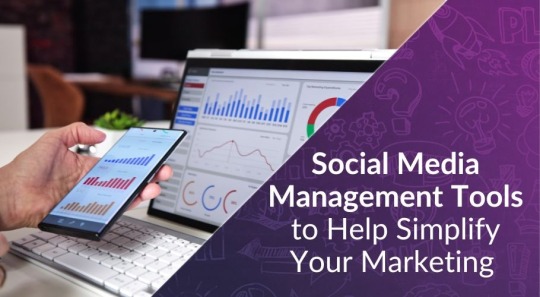
Social media marketing can be extremely time-consuming, especially when you’re juggling multiple accounts on various platforms.
From scheduling posts to engaging with followers and analyzing performance, staying on top of everything can be incredibly overwhelming.
But luckily, there are a ton of social media management tools you can use to simplify and streamline your marketing efforts on these platforms.
These powerful tools can help you save time by automating tasks, streamlining your workflow, and ensuring your content reaches the right audience at the right time.
And if you know how to put them to good use, they’ll save you hours of time each and every week.
But with so many options available, choosing the right tool for your needs can be challenging.
Some tools specialize in content scheduling, while others focus on analytics, engagement, or collaboration, but from my perspective, the best social media management tools combine multiple features that help you to work smarter, not harder.
All things considered, whether you’re a solopreneur, a small business owner, or part of a large marketing team, finding the right software solutions can make all the difference in the world.
And if you want to streamline and simplify your social media marketing, aside from choosing the right software, you’ve also got to have a solid understanding of your brand positioning.
So, if you feel like social media is taking up too much of your time, you’re looking for some time-saving social media tools, or you’re just wondering what any of this has to do with brand positioning, this article will tell you everything you need to know.
6 of the Best Social Media Management Tools
By streamlining your workflows, social media management tools will allow you to spend less time on manual tasks like posting, and more time engaging with their audience, creating high-quality content, and focusing on growing your business.
But there are a lot of tools out there, and if you’re not familiar with them, it can be tough to choose the one that’s best for you.
With that in mind, below I’ve detailed some of the best social media management tools that will help you save time and simplify your marketing efforts.
1) Publer: The All-in-One Scheduler
Publer is a powerful and affordable social media management tool designed to help businesses schedule, automate, and analyze their social media content across multiple platforms.
Whether you’re a small business owner, freelancer, or marketing team, Publer simplifies your workflow by allowing you to schedule posts in advance, collaborate with team members, and analyze performance – all from a single dashboard.
Publer helps you to save time and simplify your social media marketing by offering:
Multi-platform scheduling, which allows you to schedule posts on Facebook, Instagram, LinkedIn, Twitter, Pinterest, Google Business Profile, TikTok, and YouTube
Automated posting, which lets you set up recurring posts, bulk scheduling, and AI-powered auto-scheduling to maximize efficiency
Collaboration tools to invite team members, assign roles, and work together seamlessly on content creation
Detailed analytics that track engagement, reach, and performance metrics
Key Benefits of Using Publer
Saves time by automating posts and eliminating the need for manual publishing
Enhances content planning with a visual calendar for better organization
Improves team collaboration with shared access and approval workflows
Offers a cost-effective alternative to more expensive platforms like HootSuite
All things considered, Publer is an excellent choice if you’re looking for a user- and budget-friendly social media management tool with robust scheduling and analytics capabilities.
2) Monday.com: The Best Workflow Organizer
Monday.com is primarily known as a project management tool, but it’s also an excellent option for social media management.
It allows you to organize, track, and automate your content marketing workflow, which makes it easier to collaborate on posts, track deadlines, and measure progress.
Monday.com helps you to save time and simplify your social media marketing by offering:
Content planning and scheduling capabilities, including customizable templates to plan and assign your social media posts
Automations for efficiency, which streamline workflows by providing automated reminders and task assignments
Collaboration tools that allow team members to leave comments, upload files, and track post progress in real-time
Integration with social media tools that connect to platforms like Twitter, Facebook, LinkedIn, and Instagram
Key Benefits of Using Monday.com
Keeps your social media strategy organized with a clear content calendar
Enhances teamwork by providing a single space for collaboration
Reduces manual effort by automating and optimizing workflows
Works well for businesses that need a comprehensive social media marketing project management tool
All in all, Monday.com is ideal for teams that need structure and organization in their social media marketing but also want to benefit from its project management features.
3) HubSpot: A Powerful CRM and Social Media Marketing Tool
HubSpot is best known for its customer relationship management (CRM) capabilities, but its social media management tools are also quite impressive.
Among other things, it lets you plan, schedule, and analyze your social media content while also integrating with the CRM, which allows you to make more data-driven marketing decisions.
HubSpot helps you to save time and simplify your social media marketing by offering:
Seamless scheduling that lets you plan and publish posts across major social media platforms, all from one place
Social monitoring capabilities that can track brand mentions, respond to comments, and effortlessly engage with followers
Analytics and reporting that provide detailed insights into the performance of your posts and audience engagement
A CRM that integrates social media, allowing you to further refine your marketing strategies and interactions with customers
Key Benefits of Using HubSpot
Offers a complete marketing solution by providing CRM, email marketing, and social media management
Helps you track your ROI by linking social media performance with customer data
Simplifies social listening and engagement, making it easier to connect with audiences
Ideal for businesses that want a single platform for all their marketing needs
On the whole, HubSpot is an excellent tool for companies that need a comprehensive, data-driven approach to social media marketing.
Read: Why You Should Be Careful What You Post on Social Media
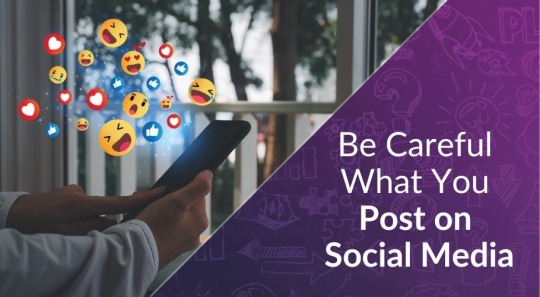
If you want to save time and simplify your marketing, it’s important to use the right social media management tools.
But if you want your social media marketing to be effective, you’ve also got to know what you should and shouldn’t post. Otherwise, you could be undermining your own efforts.
With that in mind, this article explains why you need to be careful about what you post and explores several high-profile examples of just how easy it is to ruin your reputation on social media.
Keep reading here.
4) HootSuite: The Well-Known but Pricey Industry Standard
HootSuite is one of the most recognized names in social media management, as it offers a robust suite of tools for scheduling, monitoring, and analyzing social media content.
But while it is powerful, it’s also one of the most expensive options, which makes it better suited for larger businesses or marketing teams with bigger budgets.
HootSuite helps you to save time and simplify your social media marketing by offering:
Advanced scheduling that allows you to automate posts across multiple platforms with precise control
Social media monitoring that tracks conversations, brand mentions, and audience engagement
Analytics and reporting that provide in-depth insights into your audience’s behaviour and the performance of your posts
Team collaboration capabilities, which allow you to assign tasks, review content, and manage approvals, all in one place
Key Benefits of Using HootSuite
Saves time by allowing you to manage multiple accounts from one dashboard
Provides valuable insights to help you optimize your social media strategies
Enhances collaboration with multi-user access and approval workflows
However, despite all of these benefits, Hootsuite comes with a much higher price tag, making it far less accessible for small businesses.
So, while it is a powerful tool, businesses on a budget may find better value in alternatives like Publer or Monday.com.
5) Buffer: A Simple Yet Effective Tool
Buffer is a user-friendly and cost-effective social media management tool that focuses on things like scheduling, analytics, and engagement tracking.
It’s great for businesses that want a straightforward tool without all the unnecessary complexities.
Buffer helps you to save time and simplify your social media marketing by offering:
Easy post scheduling to quickly schedule and publish posts across various platforms
Engagement tracking to respond to comments and messages from one unified inbox
Performance analytics that provide clear, easy-to-understand reports on post engagement
Content approval workflows to allow for collaboration with team members before publishing content
Key Benefits of Using Buffer
Offers an intuitive and streamlined interface for easy management
Provides essential analytics without overwhelming users with too many features
Much more affordable when compared to more high-end tools like HootSuite
Great for businesses looking for lightweight, yet effective social media management
All things considered, Buffer is perfect for small businesses and solo entrepreneurs who need an easy-to-use, budget-friendly social media tool.
6) Brand Positioning: The Ultimate Tool for Social Media Marketing
While software tools can help you to streamline your social media marketing, understanding your brand positioning is just as crucial.
Because when you know who your audience is, what they care about, and how to position your brand effectively, it can help you save tons of time and simplify your entire process, both of which can increase the success of your marketing efforts.
Among many other benefits, having a firm understanding of your brand positioning, which includes defining your ideal client and doing a thorough analysis of your brand, can help you:
Create a clear content strategy based on your audience’s interests
Eliminate the guesswork by focusing on what truly resonates with your followers
Save time by reducing the amount of trial-and-error that’s necessary
Strengthen the consistency of your branding, which makes your messaging more effective
What’s more, strong brand positioning helps you to craft content that naturally attracts engagement, ensures your marketing efforts are aligned with the needs of your audience, and makes it easier to create impactful and timely social media campaigns.
And when you have this kind of deep understanding of your brand, and how it’s positioned, it makes all of your social media efforts more strategic and effective.
How These Social Media Management Tools Compare
Each of the tools I’ve mentioned offers valuable features for streamlining your social media marketing, but making the best choice for your business will depend on your specific needs, budget, and priorities.
With that in mind, let’s see how these social media management tools stack up:
Publer
Publer is an excellent option for businesses that want an all-in-one social media scheduler at an affordable price.
It provides robust scheduling, automation, and analytics tools without the high cost of premium platforms.
So, if budget-friendliness and ease of use are your top priorities, then Publer is a great choice.
Monday.com
Monday.com is ideal for businesses that need a structured workflow for their social media marketing.
It functions more like a project management tool than a traditional social media scheduler but offers excellent collaboration features.
That being said, if you work with a team and need a highly organized content planning process, Monday.com is worth considering.
HubSpot
HubSpot is best for businesses looking for an integrated CRM and social media management tool.
It allows for advanced marketing automation and detailed analytics tied directly to customer data, making it a great solution for companies that want to align their social media efforts with their sales and marketing strategy.
However, it comes at a higher price point than many other tools.
HootSuite
HootSuite is a well-known, comprehensive social media management platform with powerful features, but it is also one of the most expensive options on the market.
While it’s great for businesses that need advanced analytics, monitoring, and collaboration tools, its high price tag may not be justifiable for smaller businesses or solopreneurs.
So, if budget is a concern of yours, then you can rest assured that there are more affordable alternatives that offer similar functionality.
Buffer
Buffer is a simple, user-friendly alternative that focuses on scheduling and analytics.
It lacks some of the more advanced features of platforms like HubSpot or HootSuite but provides a straightforward and cost-effective way to manage your social media content.
All in all, it’s a great choice for small businesses or individuals who need an easy-to-use tool without too many complexities.
Do you need some help managing your social media? Why not set up a free 30-minute consultation with me to find out how our services can help you save time and simplify your marketing?
To your business success, Susan Friesen
P.S. If you liked the article, you might want to subscribe to our newsletter. We publish tons of valuable content to help you learn more about marketing, and subscribing is the best way to ensure you don’t miss out. Additionally, if you’d like to learn more about building a search engine optimized website, click here for our free website guide.
1 note
·
View note
Text
AI Innovations That Will Revolutionize Marketing in 2025

Over the last year, artificial intelligence has completely reshaped the marketing world.
Initially, there was a lot of pushback and apprehension about what this would mean for marketers, and rightfully so.
At the time, among many other questions, we were all wondering:
Was this technology going to make us obsolete?
Would we still have a viable business model a year from now?
And how would this end up affecting things like privacy and copyright?
But once we actually started using it, we learned how amazing these artificial intelligence tools are, and how we can use AI to serve clients better.
More importantly, we quickly realized that if we chose not to use these tools, we’d be left in the digital dustbin, along with all the other dinosaur marketers who refused to adopt this technology.
The writing was on the wall: If we didn’t embrace AI, within a matter of years, or even less, we were going to be made obsolete – not by the AI itself, but by our rejection of it.
So, in the end, we took a positive perspective on AI, and ended up being one of its early adopters.
And like so many other businesses out there, we’re incredibly glad we did.
For instance, a Salesforce survey, which polled more than 2,000 sales and service professionals, found that 61% of respondents believe generative AI will help them better serve customers and sell more efficiently.
What’s more, 84% of respondents said generative AI helps to increase sales by enhancing and speeding up customer interactions, and 90% agreed that it helps them serve customers faster.
That being said, while AI didn’t deliver all the doom and gloom that many of us expected it would, at this point, it’s obvious that those who choose not to use it will be doing so at their own peril.
And in an attempt to quell some of the anti-AI sentiment that still exists, I wanted to go over some of the ways we use AI to serve clients better.
So, if you’re looking to learn about improving service quality with AI, and the kind of AI-driven client care strategies that will allow you to do that, then this article is a must-read.
How We Use AI to Serve Clients Better
AI has become an integral part of how we operate, and we use AI to serve clients better in a variety of different ways.
From generating innovative ideas and conducting in-depth research to crafting ideal client profiles and everything in between, AI empowers us to better serve our clients.
With that in mind, let’s explore five specific areas where AI helps us deliver exceptional results.
1) Ideation
If you work in a creative field, I’m sure you’re well aware that generating fresh, innovative ideas is one of the most challenging aspects of working with clients.
Whether you’re crafting a marketing strategy, planning a social media campaign, or brainstorming content ideas, the ideation process can sometimes hit creative roadblocks.
But through the use of a few prompts, artificial intelligence tools like ChatGPT can generate an endless supply of unique concepts, no matter what you’re creating.
These tools also adapt to feedback, allowing us to refine our ideas, and tweak the AI’s suggestions until they perfectly align with what we’re trying to accomplish for a given client.
And because we don’t have to spend all day coming up with ideas, we can spend more of that time ensuring we’re doing the best job we can for clients.
What’s more, AI can even simulate audience reactions, offering insights into how an idea might be received before it’s even implemented, and this ensures every suggestion we present to our clients has a strong foundation.
From our perspective, AI doesn’t replace human creativity – it simply enhances it.
And by acting as a catalyst for innovative thinking, AI ensures we consistently deliver fresh, compelling ideas that help our clients stand out in crowded markets.
2) Research
Whether we’re studying clients’ competitors, trying to understand consumer behaviour, or something else entirely, research forms the basis of the strategies and recommendations we provide for clients.
And although traditional research methods can be just as thorough, they’re incredibly time-consuming and often limited in scope.
Luckily for us, AI has dramatically streamlined this process.
For instance, if I’m looking for a report or some survey data to back up what I’m saying in an article, I could easily spend half an hour or more searching for something relevant.
But if I tell ChatGPT what I’m looking for, it will scour the internet for me and provide multiple different options, typically within a matter of seconds.
We also use AI-powered research tools for market research, as they can analyze vast quantities of information, helping us filter out the noise and ensure we focus only on high-quality, relevant data.
AI also excels in predictive analytics, which enables us to forecast trends and identify emerging opportunities, including things like shifts in consumer preferences, which helps our clients stay ahead of the curve.
At any rate, by using AI for research, we not only save time but also ensure our strategies are informed by comprehensive, up-to-date insights, which allows us to provide the best possible results for our clients.
Read: The Biggest AI Marketing Mistakes That Every Business Should Avoid

Understanding how we use AI to serve clients better can help to provide perspective on what these tools are actually capable of.
But if you want to make the most of AI, you also need to know what you shouldn’t do with it, and how to avoid these common mistakes.
With that in mind, this article explores the biggest AI marketing mistakes businesses should avoid, like misinterpreting analytics, failing to define clear goals, and more.
Keep reading here.
3) Ideal Client Profiles
One of the most innovative ways we use AI to serve clients better is by creating what are known as ideal client profiles.
If you’re not sure what that is, an ideal client profile is an analysis of the most ideal kinds of customers for a given client, and it’s based on things like demographics and psychographics, along with people’s wants, needs, pains, fears, and aspirations.
In the past, developing these profiles required extensive data collection and analysis, which was often impossible, so if a client didn’t have the budget for such an in-depth dive into the minds of their customers, out of necessity, we tended to rely more on generalized assumptions.
But AI has revolutionized this process, allowing us to create detailed, data-driven profiles that capture the nuances of each client’s target audience.
And we can do this in a matter of minutes using a series of strategic prompts that contain key points about the client.
These insights are invaluable, as they help us understand not just who these ideal clients are, but also how they think and behave.
This allows us to ensure our clients’ marketing efforts will resonate deeply with their target audiences, empowering them to connect with their ideal clientele on a more meaningful level.
4) Social Media
Social media offers a great way to help our clients build brand awareness and engage with their respective audiences.
But managing social media accounts, and consistently creating fresh content, can be extremely overwhelming, not least due to the constant changes in algorithms and audience preferences.
With that in mind, AI has become an absolutely invaluable tool for streamlining and optimizing our clients’ social media strategies.
For instance, AI-powered scheduling tools like Publer allow us to plan and automate posts across multiple platforms, which saves a massive amount of time over making posts manually.
These kinds of tools can also analyze audience engagement patterns to determine the best times to post, ensuring our clients get the maximum amount of visibility.
What’s more, AI can also suggest content ideas based on trending topics and hashtags, which helps us to remain relevant and timely.
And when it comes to social media, one of the most powerful ways we use AI to serve clients better is through analytics, as AI can identify what’s working and what isn’t.
This allows us to continuously refine our approach and focus on developing creative, engaging content that will provide the absolute best results for clients.
5) Content Marketing & Copywriting
No matter how you slice it, content is the backbone of any successful marketing strategy.
But whether you’re writing blog posts, newsletters, ad copy, or website content, creating high-quality content requires time, skill, and creativity.
And if you’ve ever experienced writer’s block, then you’ll know how difficult it is to consistently pull this off.
Fortunately, AI has revolutionized the content creation process by providing tools that dramatically enhance efficiency without sacrificing quality.
AI-powered tools like ChatGPT assist us in generating content that is polished, engaging, and tailored to specific audiences.
For instance, when crafting a blog post, we can use AI to generate an initial draft, which we’ll then refine and personalize to align with the client’s brand.
And if you’re ever stuck on something, AI can provide endless suggestions for everything from titles to headings to keywords, and more.
AI also plays a crucial role in SEO optimization, as it helps us perform comprehensive keyword research, which helps us create content that will rank higher in search results.
Whether it’s a captivating social media post, a thought-provoking report, or something else altogether, AI helps us create content that not only meets but exceeds our clients’ expectations.
Are you looking for a marketing agency that’s proficient in AI to help you serve your clients better? Why not set up a free 30-minute consultation with me to find out how our services can help grow your business.
To your business success, Susan Friesen
0 notes
Text
AI Innovations That Will Revolutionize Marketing in 2025

As we step into 2025, the world of marketing is evolving at a lightning pace, and AI innovations are at the heart of that transformation.
AI is no longer just a tool for automating repetitive tasks or analyzing data – it’s becoming a strategic partner, which enables your business to deliver personalized experiences, predict customer behaviour, and achieve levels of efficiency that were once thought to be impossible.
From advanced predictive analytics to AI-driven content creation, several AI innovations emerging this year are poised to revolutionize how all businesses engage with their audiences.
These artificial intelligence breakthroughs are empowering your marketing team to go beyond demographics, allowing them to tap into things like psychographics, real-time intent signals, and emotional triggers, all of which are redefining what it means to truly connect with customers.
Imagine chatbots that not only answer questions but also anticipate needs and provide tailored solutions before customers even articulate a need for them.
Or how about dynamic ad campaigns that adjust themselves in real-time based on user interactions or AI-powered platforms that write ad copy optimized for specific audience segments?
This stuff may sound pretty far-fetched, but these technologies are no longer just futuristic concepts, and the implications of these AI breakthroughs are truly enormous.
That being said, as a forward-moving business owner, understanding these trends is crucial if you want to remain competitive.
So, if you’re wondering what’s next for AI and machine learning in 2025, keep reading to learn about the latest AI innovations, and how they can elevate your marketing strategies to new heights of success.
2025’s Most Groundbreaking AI Innovations
The year 2025 is poised to be a landmark year for marketing, driven by some of the most groundbreaking advancements in artificial intelligence.
These AI innovations will empower your marketing team to achieve unprecedented levels of insight, efficiency, personalization, and creativity.
With that in mind, let’s explore some of the AI breakthroughs that are set to revolutionize the world of marketing this year.
Hyper-Personalization
In 2025, artificial intelligence will enable your marketing team to achieve hyper-personalization at an unprecedented scale.
This development goes beyond traditional segmentation, which tends to be based on demographics or purchasing habits.
Instead, AI will analyze vast amounts of real-time data to deliver content tailored to customers’ individual preferences, browsing history, and contextual needs.
For example, an eCommerce platform might use AI to dynamically generate unique product catalogs for each visitor.
And by doing so, marketers will be able to create highly engaging customer experiences, driving increased satisfaction and higher conversion rates.
Advanced Predictive Analytics
Predictive analytics, powered by AI, will become an integral part of marketing strategies in the coming year and beyond.
By leveraging historical data and advanced algorithms, your business can forecast key outcomes like customer lifetime value, campaign performance, and emerging consumer trends.
These insights will empower your marketing team to make data-driven decisions, allocate resources more effectively, and prioritize high-impact initiatives.
As a result, companies will be better equipped to minimize wasted ad spend and maximize return on investment.
Conversational AI and Intelligent Chatbots
Over the coming year, and into the future, conversational AI and advanced chatbots will redefine how businesses interact with their customers.
These systems will provide round-the-clock support, offering accurate and empathetic responses that closely mimic human interactions
And in addition to resolving customer queries, conversational AI will serve as a proactive marketing tool, suggesting products or services tailored to each individual’s needs.
For example, a chatbot on a travel booking website could assist users in finding personalized vacation packages by analyzing their previous travel history, preferences, and budget.
Voice and Visual Search Optimization
The increasing popularity of smart devices and AI-powered assistants like Alexa and Siri has made voice search increasingly popular.
At the same time, visual search, where users can upload images to find related products or information, is rapidly gaining traction, as well.
With that in mind, marketers in 2025 will have to focus on optimizing their content to ensure it accommodates these search modalities.
Voice search optimization will require a shift toward more conversational and longer-tail keywords, while visual search capabilities will rely on AI to accurately identify and recommend relevant products.
In any case, brands that adapt to these new technologies will gain a significant competitive advantage, as they’ll be more easily discoverable online.
Generative AI for Content Creation
Generative AI technologies, like ChatGPT, have already revolutionized the way marketing content is created, and they’ll continue to do so in 2025.
These tools automate the production of high-quality materials, including blogs, videos, and social media posts, enabling marketers to maintain a consistent output without taxing their available time.
Furthermore, generative AI will personalize content by incorporating real-time data into narratives, which helps to ensure relevance and resonance with target audiences.
For instance, AI-generated personalized video ads tailored to different customer segments will reduce production costs while enhancing the effectiveness of ad campaigns.
Emotional AI for Deeper Customer Insights
In 2025, emotional AI, which can interpret human emotions through voice, facial expressions, and behavioural cues, will continue to gain popularity as a tool for everyone.
This technology provides deep insight into the needs, wants, preferences, and emotional responses of customers, all of which can help your marketing team optimize their campaigns.
For example, retail stores can use emotional AI to adjust in-store digital displays based on the moods of their customers.
What’s more, emotional AI can help to enhance customer service interactions by identifying frustration or dissatisfaction in real time, which allows issues to be addressed more proactively.
AI-Powered Influencer Marketing
Influencer marketing will become increasingly data-driven in 2025 and beyond, thanks to AI tools capable of identifying influencers whose audiences align with a brand’s target demographics.
These tools will analyze historical performance data to predict the potential return on investment from influencer campaigns.
Moreover, AI can automate many aspects of influencer collaboration, from content approval to posting schedules, helping to streamline the process for both brands and influencers.
And by detecting fraudulent practices, like fake followers, AI will also help to ensure that influencer partnerships yield genuine engagement and reach.
Read: What ChatGPT Can Do to Benefit Your Business

Generative AI tools like ChatGPT are just one of the many technologies that are revolutionizing the world of marketing, but they’re also some of the most useful.
From writing, editing, and refining content, to building ideal client profiles, the utility of these tools is almost unbelievable.
With that in mind, this article explains how ChatGPT can benefit your business by helping with planning, ideation, market research, and more.
Keep reading here.
Enhanced Marketing Automation
AI-powered automation tools will continue to streamline complex marketing processes in 2025, making them more efficient and effective.
Campaign management and lead nurturing across multiple platforms will become much more seamless, as a result of personalized email sequences.
Social media scheduling and optimization will also benefit from AI, allowing your marketing team to focus on strategic planning and creativity rather than repetitive tasks.
And by helping to improve operational efficiency, these tools will enable businesses to achieve more in less time.
Real-Time Ad Optimization
One of the more impressive AI innovations that’s revolutionizing marketing in 2025 is what’s known as real-time ad optimization.
This technology plays an ever more critical role in optimizing digital advertising by enabling real-time adjustments to ad placements, bids, and graphics.
Advanced algorithms will analyze performance metrics and make immediate changes to maximize return on investment.
For instance, AI could dynamically alter ad copy to reflect current events or trending topics, ensuring ads are more relevant and engaging
In addition, it can also identify underperforming campaigns and suggest actionable improvements, helping marketers to fine-tune their advertising strategies.
Data Privacy and Ethical AI
With the growing emphasis on data privacy and the introduction of more and more strict regulations, AI will increasingly assist your marketing team in maintaining the trust of consumers.
This trend will undoubtedly expand in 2025, as AI systems are now able to anonymize and encrypt user data, provide transparent explanations of data usage, and offer customers greater control over their preferences.
And as we move into the future, ethical AI will become a cornerstone of marketing strategies, as it helps businesses to build trust by operating more responsibly.
Augmented Reality (AR) and Virtual Reality (VR) Marketing
Augmented reality and virtual reality technologies, many of which are powered by AI, are making it easier for your marketing team to create immersive experiences that captivate consumers.
In 2025, these technologies will allow customers to virtually “try on” or “try out” products, such as clothing or furniture, before making a purchase, and they will also enable virtual walkthroughs of real estate properties or travel destinations.
And by using AI to integrate gamification elements into their marketing campaigns, brands will boost engagement and foster deeper connections with their audiences.
For example, a beauty brand could use AR to let customers visualize how makeup products would look on their faces, which enhances their online shopping experience.
AI-Driven Social Listening
By analyzing conversations across social media platforms, forums, and online communities, AI-powered social listening tools can provide marketers with real-time insights into consumer sentiment, emerging trends, and competitor activities.
This technology will be increasingly adopted in 2025, as businesses will be able to identify countless opportunities for engagement and craft more timely responses.
What’s more, these tools will also help your marketing team monitor the performance of their campaigns and adjust strategies based on audience feedback.
AI in Programmatic Advertising
Programmatic advertising, which involves the automated buying and selling of ad space, will become even more popular in 2025, as its AI algorithms become better at optimizing targeting criteria and predicting the best times and platforms for ad placements.
These advancements will significantly reduce wasted ad spend and ensure that campaigns reach the most relevant audiences.
And by analyzing performance data in real time, AI will enable your marketing team to refine their strategies on the fly and maximize the impact of their advertising efforts.
AI for Customer Journey Mapping
In 2025, AI will continue to revolutionize customer journey mapping by providing an even more comprehensive view of how your target audience interacts across multiple touchpoints.
Advanced analytics will identify friction areas, predict drop-off points, and suggest interventions to improve the customer experience.
In addition, offering personalized experiences at each stage of the funnel will become more common, which helps to foster deeper connections and higher retention rates.
AI-Powered Video Marketing
Video content will continue to dominate as a marketing medium in 2025, with AI playing a pivotal role in both its creation and distribution.
Automated video editing tools, which help to streamline production processes, will continue to become more common, real-time subtitles and translations will make content accessible to much wider audiences, and personalized video ads, which adapt to individual viewer preferences, will enhance engagement and effectiveness.
For example, an AI system could create different versions of a product demo video, tailored to the unique needs of various customer segments.
Has your business embraced AI yet? How so?
If leveraging the power of AI feels daunting, why not set up a free 30-minute consultation with me to find out how our marketing team can help so you can continue to focus on what you love doing the most.
To your business success, Susan Friesen
P.S. If you liked the article, you might want to subscribe to our newsletter. We publish tons of valuable content to help you learn more about marketing, and subscribing is the best way to ensure you don’t miss out. Additionally, if you’d like to learn more about building a search engine optimized website, click here for our free website guide.
0 notes
Text
11 Strategies for Boosting Sales After the Holidays
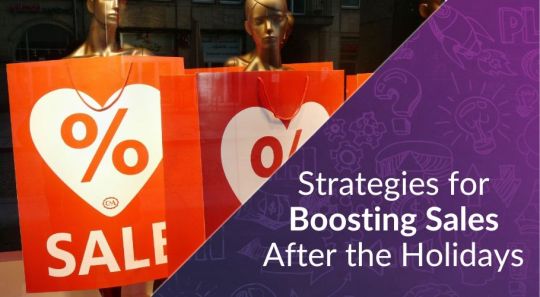
Without a doubt, the holiday season is the most lucrative time of year for business.
From Black Friday to the end-of-year shopping frenzy, when people are searching for last-minute gifts, it’s a time when consumers are eager to spend.
But with consumer spending slowing down, and people’s priorities shifting, it can feel like a struggle to keep the momentum going.
And although many business owners agonize over their approach to holiday sales, not nearly as many spend time on strategies for boosting sales after the holidays.
Oftentimes, it’s taken for granted that the first few months of the year will see the fewest sales, and rather than do anything to counteract that, they just accept it as inevitable.
But the truth is, there’s a lot you can do to deal with the post-holiday sales slump, and boosting sales after the holidays isn’t as difficult as you might think.
For one thing, there are actually a lot of people looking to shop in post-holiday sales.
As you can see from the graph below, two-thirds of those who responded to a YouGov survey, which polled more than 1,100 American consumers, said they typically engage in post-holiday sales, with 15% saying they always shop in these kinds of sales.
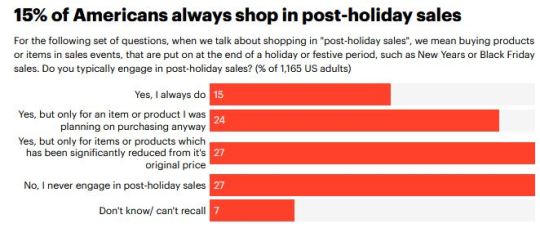
What’s more, because so many business owners just accept this as the slowest time of year, and don’t do much to combat that, if you do work on driving sales after the holiday season, you may have a competitive advantage.
So, if you want to know how to increase sales after the holiday rush, this article will provide the post-holiday sales strategies you need to do just that.
What You Can Do to Boost Sales After the Holidays
The post-holiday sales slump is a challenge for many businesses, but it also presents an opportunity to refocus your efforts and implement strategies to set the tone for greater success, even during those first few months of the year.
With that in mind, below you’ll find some of the best strategies for boosting sales after the holidays.
1) Evaluate Your Holiday Performance and Set Goals
Before jumping into new strategies, you should take a step back and evaluate how your business performed during the holiday season.
You can do this by looking at sales data to identify which products or services performed best, what promotions were the most effective, and where you might have room for improvement, and then you can use that analysis to inform your post-holiday sales strategies.
For example, if a particular product was a top seller during the holidays, you might want to consider offering another product or service to complement that product, or coming up with another offer related to that top seller, which can help to drive additional sales.
And once you have a clear picture of your holiday performance, then you’ll be much better equipped to set realistic goals for the post-holiday period.
These goals might include things like increasing repeat customers, clearing out excess inventory, or launching a new product or service.
In any case, once you’ve got some specific objectives in mind, you can then create targeted strategies to achieve them.
2) Clear Out Holiday Inventory With Strategic Promotions
One common post-holiday challenge is figuring out how to deal with all your leftover inventory, as excess stock from the holidays can take up valuable storage space and tie up capital.
To address this, you should consider running promotions to clear out your holiday inventory.
Things like limited-time discounts, clearance sales, or “buy one, get one” offers can help move products quickly while attracting budget-conscious customers who are still looking for deals after the holidays.
You can position these promotions as an opportunity for customers to take advantage of post-holiday savings by using phrases like “New Year Clearance” or “Last Chance Holiday Deals” to create a sense of urgency.
3) Reengage Holiday Shoppers
The holiday season often brings in new customers, many of whom may have made a one-time purchase.
With that in mind, the first few months of the year offer a great opportunity to turn those holiday shoppers into returning customers.
One of the ways you can do this is by reaching out with personalized email campaigns that thank them for their holiday purchase and offer them an incentive to return, such as a discount on their next order.
What’s more, you can segment your customers based on their holiday purchases and then send them tailored recommendations for related products or services.
For example, if a customer purchased a gift set, you could suggest complementary items or offer a discount on refills.
This kind of personalization is key, as it shows customers that you value their business and understand their needs, and this may make them more likely to shop with you again.
4) Leverage the Power of Social Media
Hands down, social media is one of the most valuable tools for driving engagement and boosting sales after the holidays, as platforms like Instagram, Facebook, and TikTok can be used to showcase products and highlight your post-holiday promotions.
That being said, you should keep in mind that visual content, like photos and videos of the products you’re selling, can be particularly effective in capturing attention and inspiring purchases.
Another great strategy is to encourage user-generated content by asking customers to share photos or videos of how they’re using your products and offering a discount or entry into a giveaway as an incentive for them to do so.
This not only builds a sense of community around your brand, and helps to build trust, but also provides authentic content that can entice potential customers to make a post-holiday purchase.
5) Capitalize on New Year’s Resolutions
The new year is a time when many people are focused on self-improvement, achieving their goals, and working toward New Year’s resolutions.
Having said that, you should try to align your marketing efforts with common New Year’s resolutions, if possible, as this will help to make your products and/or services more relevant.
For example, if you sell fitness equipment, you can promote your offerings as tools to help customers achieve their health and wellness goals.
Similarly, if your business focuses on organization, you should emphasize how your products can help customers start the year off on the right foot.
In any case, you should create campaigns that speak directly to these goals and position your business and its offerings as the solution to achieving them.
Read: 9 Lead-Generation Strategies to Help You Make More Sales

If you want to boost sales during the holidays, the post-holiday period, or any other time, for that matter, you’re going to need to know how to generate a steady stream of leads.
But if you’re not familiar with how to do this, or you’re struggling to bring in leads, then you could definitely use a crash course.
With that in mind, this article explores several lead generation strategies, including content marketing, social media marketing, email automation, and more.
Keep reading here.
6) Introduce a New Product or Service
The start of a new year is the perfect time to introduce something fresh to your customers.
Whether it’s a new product line, a seasonal offering, or an updated version of an existing product or service, launching early in the year can help to generate excitement and drive post-holiday sales.
That being said, you should plan a promotional campaign around the launch, using email marketing, social media, and your website to build anticipation.
In doing so, you should highlight the unique features and benefits of the product or service in question and offer an exclusive discount or bonus for early adopters.
This can help to boost sales after the holidays and will also position your brand as more dynamic and exciting in the eyes of your customers.
7) Optimize Your Online Presence
With more consumers shopping online than ever, your digital presence is a critical factor when it comes to driving post-holiday sales.
Having said that, you should take this opportunity to review your website and make any necessary updates, ensuring that it’s easy to navigate, looks great on any device, and offers a seamless shopping experience.
In addition, you can update your home page with a New Year’s theme and prominently feature any ongoing promotions or new product launches.
What’s more, you should update your search engine optimization (SEO) strategy to target keywords that are relevant to the post-holiday period.
These small updates can make a big difference when it comes to attracting and converting customers, not least during this time of year.
8) Collaborate With Other Businesses
Partnerships with complementary businesses can be a powerful way to expand your reach and drive sales after the holidays.
But before you explore opportunities to collaborate, you’ve got to make sure that the businesses you’re thinking of working with are aligned with your brand positioning.
For example, if you own a bakery, you could partner with a coffee shop to offer joint promotions or cross-promote each other’s businesses.
Collaborations can also include things like co-hosting events, creating bundled product offerings, or running joint social media campaigns.
And by working together, you can tap into each other’s customer bases, providing added value to your audiences, all while working to boost post-holiday sales.
9) Host a Customer Appreciation Event
A customer appreciation event is a great way to reengage your audience and encourage repeat business after the holidays.
Whether it’s an in-store celebration or a virtual event, you can use this opportunity to thank your customers for their support and showcase what’s new with your business.
In addition, you can offer exclusive discounts, free samples, or early access to new products as incentives for attending.
Events like this not only help to boost business after the holidays but can also help to build customer loyalty and create a more positive impression of your brand.
10) Focus on Building Long-Term Relationships
While immediate sales are important, the post-holiday period is also a time to focus on building lasting relationships with your customers, so you can help to ensure they’ll still be around at this time next year.
In doing so, you should provide exceptional customer service, follow up on purchases to ensure satisfaction, and encourage feedback.
These efforts show your customers that you value their business and are committed to meeting their needs.
You might also want to consider implementing a loyalty program to reward repeat customers and give them incentive to keep coming back throughout the year.
In any case, offering things like points for purchases, exclusive discounts, or early access to sales can help to incentivize long-term engagement and strengthen your relationship with your audience.
11) Plan Ahead for the Next Holiday Season
As you work to boost post-holiday sales, you should take stock of what you learned during the holiday season and use those insights to start planning for the future.
You should also dig as deep as possible by analyzing trends from the holiday season and gathering as much information as you can on the behaviour of your customers.
This kind of planning and preparation will help you be better equipped to capitalize on opportunities and make the next holiday season – and post-holiday period – even more successful.
Need some help boosting sales after the holidays? Why not set up a free 30-minute consultation with me to find out how we can help!
To your business success, Susan Friesen
P.S. If you liked the article, you might want to subscribe to our newsletter. We publish tons of valuable content to help you learn more about marketing, and subscribing is the best way to ensure you don’t miss out. Additionally, if you’d like to learn more about building a search engine optimized website, click here for our free website guide.
0 notes
Text
The Biggest AI Marketing Mistakes That Every Business Should Avoid

With all the nonsense we’ve been fed about artificial intelligence, it’s no wonder that businesses continue to make the same AI marketing mistakes.
Unfortunately, many business owners have the wrong idea about AI, and typically, this is through no fault of their own.
Since its inception, we’ve been hearing about how amazing generative AI is, and how it’s going to allow you to fire your entire marketing team and write an award-winning novel with just a single prompt, along with about a million other claims, most of which have not come to fruition.
To be fair, artificial intelligence platforms like ChatGPT are incredible tools, and in the marketing industry, we use them every day.
They’ve been so disruptive, in fact, that they’ve basically reshaped the world of marketing in a matter of months.
As I pointed out in my article on How Your Small Business Can Easily Leverage AI, a survey from Intuit QuickBooks, which targeted small businesses, found that more than 80% of respondents are already using AI, over a third of them use it daily, and 65% of them said they want to use it more than they already are.
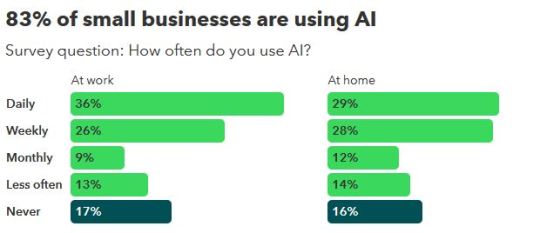
But despite how great tools like ChatGPT are, and how widespread their use is, their value has been completely overblown, and they’ve been made out to be something they’re not.
That being said, if you don’t understand what not to do with AI in marketing, then you’re going to be much more susceptible to being bamboozled by all the hype and making the same AI marketing mistakes that companies keep repeating.
So, if you’re looking to learn about using AI for marketing, but you want to make sure you’re aware of all the AI marketing errors to avoid, then I hope you take the time to keep reading.
Avoid These AI Marketing Mistakes at All Costs
It was inevitable that AI would become a transformative force in marketing, as it enables businesses to streamline operations, analyze vast quantities of data, and improve overall productivity, among many other things.
But despite its massive potential, it is not without its challenges, and businesses can end up making many AI marketing mistakes when implementing this technology.
With that in mind, below you’ll find a list of some of the most common AI marketing errors, complete with actionable advice on how to avoid making them yourself.
1) Failing to Define Clear Goals
When it comes to AI, one of the biggest mistakes businesses make is diving into this technology without a clear understanding of what they hope to achieve.
AI tools are often adopted because they seem cutting-edge or because competitors are using them, but without clear objectives, these tools can fail to deliver any meaningful results.
When AI is deployed without specific goals, you can’t measure its success or determine whether it’s worth the investment, and this lack of direction often leads to underwhelming outcomes, frustration, and the perception that AI does not work.
If you want to avoid this, before implementing any AI technology, first you have to define what you hope to achieve.
Moreover, it’s important to ensure that these goals align with your broader marketing strategy and brand positioning, as AI should enhance and complement your existing efforts.
2) Overdependence on Automation
Automation is one of the most attractive features of AI, as it can handle repetitive tasks, analyze data at lightning speed, and even interact with your customers through the use of chatbots.
But if you rely too heavily on automation, then you could be overlooking the human element that makes marketing more relatable and effective.
When automation dominates your marketing efforts, campaigns can become impersonal.
For example, AI-driven email campaigns may send irrelevant messages if customer preferences aren’t updated, and chatbots can frustrate customers if they provide canned responses that fail to address specific queries.
So, if you want to avoid being too dependent on automation, you should use AI as a way to enhance human efforts, not replace them.
For instance, while AI can draft email campaigns, your marketing team should review and personalize them to ensure they make sense and are aligned with the rest of your branding.
Similarly, chatbots should be programmed to escalate complex issues to a human representative when necessary.
3) Ignoring Data Quality
AI systems thrive on data, but their performance depends entirely on the quality of the data they receive.
That being said, you may underestimate how important clean, accurate, and relevant data is to the success of your AI initiatives.
Because when poor-quality data is fed into AI systems, it leads to inaccurate insights, flawed personalization, and misguided decision-making, and these mistakes not only waste resources but can also alienate customers.
For example, outdated customer information can result in irrelevant product recommendations, while incomplete data can skew analytics and lead to incorrect conclusions.
In order to address these issues, you’ve got to prioritize the quality of whatever data you’re using, which involves conducting regular audits to identify and correct inaccuracies and remove duplicate or irrelevant data.
And if need be, before you even get started, you should also ensure that the AI tools you plan on using can handle large and complex datasets.
4) Lack of Understanding
One of the most common AI marketing mistakes for businesses is implementing AI tools without fully understanding how they work.
This lack of understanding can create several problems, including difficulty in optimizing AI tools, issues related to troubleshooting, and marketing campaigns that produce lacklustre results.
Depending on the circumstances, you can even use AI in ways that inadvertently harm you and your business’ reputation.
In any case, having a solid understanding of the AI tools you’re using is critical, both internally and externally.
Internally, you need to make sure your marketing team understands the AI tools you’re using, even if you’re the only one on that team.
This doesn’t mean you need to become a data scientist, but at the very least, you should have a working knowledge of how these tools generate insights and make decisions.
Externally, you should communicate openly and transparently with customers about how AI is being used, especially when it involves data collection or personalization.
For example, if you’re using AI to recommend products to your customers based on their browsing history, you should let them know.
Read: Why Is Everyone so Afraid of ChatGPT?

If you’re a fan of using generative AI for your business, you may not be aware of the problems people have with this technology. But the truth is people do have legitimate concerns about AI.
However, many of these worries are based on erroneous information, like the idea that AI will make marketers obsolete, which is obvious nonsense.
With that in mind, this article explores the recent history of AI apprehension, debunks the myth that it’ll replace your marketing team, and explains what we and our clients love about this technology.
Keep reading here
5) Misinterpreting AI Analytics
AI analytics can provide deep insights into customer behaviour, campaign performance, and market trends.
But if you misinterpret these insights, it’s one of the biggest AI marketing mistakes you can make.
For instance, you may end up coming to incorrect conclusions based on AI-generated data or rely too heavily on correlations that don’t indicate causation.
A common example is assuming that higher engagement on social media will automatically translate to increased sales, in and of itself.
These kinds of assumptions should be avoided at all costs, as they can lead to ineffective marketing strategies and wasted resources.
If you want to avoid this sort of thing, you need to approach your AI analytics with a critical eye, and you and your team should be trained to interpret data correctly and understand its limitations.
It’s also beneficial to cross-reference AI insights with other data sources, like customer feedback or industry benchmarks, to ensure its accuracy.
6) Overlooking Ethical Considerations
Ethics often take a backseat in the rush to implement AI, but neglecting these ethical considerations can lead to significant consequences, including customer backlash, legal issues, and damage to your brand’s reputation.
Common AI marketing mistakes related to ethical considerations include data privacy violations, algorithmic bias, and lack of consent when it comes to data collection.
For example, if your AI system is trained on biased data, it may produce discriminatory advertising or exclude certain groups from marketing campaigns.
Similarly, using customer data without clear consent can violate privacy laws and erode trust.
In order to address these issues, you should prioritize ethical AI practices, like complying with data privacy regulations, auditing algorithms for bias, and being transparent about how you’re collecting and using customer data.
7) Expecting Immediate Results
Artificial intelligence, in all its forms, needs time to learn, adapt, and optimize processes.
However, many business owners tend to expect instant results, and become frustrated when they don’t get them, and this can lead to premature abandonment of AI initiatives.
All things considered, it’s important to view AI as a long-term investment.
Results may take weeks or even months as the AI collects data, identifies patterns, and improves its performance.
In any case, setting realistic timelines and focusing on incremental improvements will help you stay committed and ensure you achieve better outcomes.
8) Not Personalizing Enough
One of AI’s greatest strengths is its ability to personalize your marketing efforts.
But many businesses fail to leverage this potential, instead relying on generic campaigns that often don’t resonate with individual customers, and this lack of personalization can lead to lower engagement and fewer conversions.
At any rate, if you want to maximize AI’s potential, you should use it to analyze customer behaviour, preferences, and past interactions.
This data can then inform highly targeted campaigns, like personalized product recommendations, dynamic website content, and more.
9) Thinking AI Will Replace Your Marketing Team
As much as you may want it to, the reality is AI isn’t going to make your marketing team obsolete.
And even if you’re the only one on that team, ChatGPT isn’t going to be able to do it all for you.
Despite all the claims that have been made about AI, and how amazing a tool it actually is, you can’t just ask AI to write a blog for you, not even bother looking at it, post it on your website, and think it’s going to do anything for your business.
You’re still going to need to know how to train whatever AI you’re using on the specifics of your business and have a good grasp of marketing and branding best practices.
If you don’t have this foundational knowledge, it doesn’t matter what kind of AI you’re using, it’s not going to be of much use.
So, if you do have a marketing team, don’t go firing them tomorrow, and regardless of who’s doing your marketing, you should start brushing up on your AI knowledge right now.
10) Not Editing AI-Generated Text
With so many businesses using AI to generate content, a lot of it is starting to look pretty stale.
Having said that, I think one of the main reasons for this goes back to my previous point, as many businesses think they can just pump out content ad nauseum without even editing it.
But if you’re not editing this kind of content, it’s going to become increasingly obvious to consumers that you’re just pumping out AI-written articles.
You may think that’s okay, but this is never a good look, especially as people are still getting used to the idea of AI-generated content, and many of them can’t stand this kind of content, or even the idea that it was written by AI.
I’m not saying you should hide the fact that you’re using AI for your marketing, but you probably don’t want to be promoting it either.
In any case, you’ve got to edit your content to remove the signs of AI involvement, otherwise, you might as well not even waste your time.
For example, ChatGPT is known for its excessive use of colons and emoticons, especially when it comes to titles, headings, or subject lines, and this is becoming more widely known, as AI’s been around for a while now and people are getting much better at spotting these kinds of things.
So, you should try to avoid using AI-generated content that’s formatted in this way, as it’ll be obvious that it was written by AI.
ChatGPT is also known for its excessive use of certain terms, like the word dynamic, and this can make the content it generates seem unnatural.
But regardless of what kind of content you’re creating with ChatGPT, or any other AI tool, you’ve got to ensure it’s being edited to remove any errors, reflect your brand positioning, and remain consistent with the rest of your marketing.
Nothing should ever be pumped out and then left as is, and careful consideration should always be given to whether or not the content accurately represents your brand.
Overwhelmed by AI and would prefer to leave your marketing to the pros? Why not set up a free 30-minute consultation with me to find out how we can help!
To your business success, Susan Friesen
P.S. If you liked the article, you might want to subscribe to our newsletter. We publish tons of valuable content to help you learn more about marketing, and subscribing is the best way to ensure you don’t miss out. Additionally, if you’d like to learn more about building a search engine optimized website, click here for our free website guide.
0 notes
Text
9 Holiday Branding Tips to Help You Boost Your Brand Positioning for the Holidays

Without a doubt, the holiday season is the busiest time of year for business.
But did you know that it also gives you a golden opportunity to capture the attention of your customers, and solidify your brand’s place in the minds of consumers?
With most people shopping more than usual at this time of year, and all the enthusiasm surrounding the festivities, this season offers a unique chance to connect with your audience.
However, standing out amongst a plethora of holiday promotions, discounts, and advertisements is no easy feat.
At this time of year, consumers are bombarded with marketing messages from every direction, so if you want to be remembered, you’re going to have to offer something distinct, relatable, and memorable.
With that in mind, you could probably use some holiday branding tips to help boost your brand positioning during this crucial time of year.
Because if you want to make a lasting impression over the holidays, the focus should be on doing whatever you can to enhance your brand positioning.
If you’re not quite sure what brand positioning is, this term refers to how your business is positioned in relation to your competitors, and how it’s perceived in the minds of your target audience.
If you need a refresher on this topic, you should check out my video series on Harnessing the Power of Brand Positioning.
At any rate, whether it’s the emotional appeal of your marketing, the values your brand represents, or the unique experiences you provide for customers, every touchpoint counts.
And the better your brand resonates with consumers during this highly competitive period, the more likely they’ll be to choose you over competitors.
So, if you’re looking for holiday branding tips to boost brand visibility during the holiday season, then keep reading to learn more.
Holiday Branding Tips to Boost Your Brand Positioning
Considering how much competition there is around this time of year, you’ve got to do whatever you can to stand out.
But improving your brand positioning during the holiday season is about more than just driving sales – it’s about creating meaningful connections and building lasting loyalty.
With that in mind, here are some holiday branding tips to help you boost your brand positioning this holiday season:
1) Define Your Unique Holiday Narrative
Crafting a compelling holiday story is crucial, as it can help make your brand unforgettable.
Start by identifying what makes your brand special and then try to find ways to align those qualities with the holiday season.
For example, maybe your business prides itself on sustainability or offers products that evoke nostalgia from days past.
In any case, you should focus your marketing efforts on these unique elements of your brand, and then find a way to relate them to the holidays and use that to create a narrative that will resonate with your audience.
For instance, a company specializing in handmade goods might highlight the care and thoughtfulness behind its creations, positioning them as the perfect heartfelt gift.
2) Update Your Visual Branding for the Holidays
Visual branding is a powerful tool, and this is no less true during the holidays.
So, if you want to stay relevant at this time of year, you should consider incorporating some seasonal touches into your visual branding.
This might include subtle updates to your logo, website, or packaging, like adding festive colours or other elements like snowflakes and Christmas lights.
As you can see below, here at eVision Media, we like to update our logo around the holidays.

We haven’t made the change yet, but I know Daniel’s just itching to get it up on the website.
The changes aren’t too drastic, but just adding the Santa hats, changing the logo colours, and including a few snowflakes really spruces it up for the season.
And while it may seem trivial, it lets our clients, and potential clients who may share those same values, know that we also love these holidays.
That allows us to establish an emotional connection with our audience, helping us to capture their attention and reinforcing eVision Media’s presence over the holidays.
3) Leverage Seasonal Content Marketing
Content marketing offers a great way to engage your audience and establish authority, no matter what time of year it is.
But during the holidays, you should focus on creating seasonal content that aligns with your customers’ needs and interests.
Gift guides tailored to specific demographics, blog posts featuring creative ways to use your products over the holidays, or social media campaigns encouraging customers to share their holiday moments with your brand are great examples of this kind of content.
These efforts not only provide value for your audience, and help you build an even deeper emotional connection with them, but they also help position your brand as a go-to resource during the holiday season.
Read: How to Use the Power of Storytelling to Boost Your Brand

If you want to boost your brand positioning over the holidays, coming up with a compelling holiday story is a must.
And while this may sound pretty simple, if you’re not a writer, it can be daunting, to say the least.
With that in mind, this article explains how you can use the power of storytelling to benefit your brand by doing things like understanding your audience, being authentic, and more.
Keep reading here.
4) Highlight Your Values
Consumers tend to gravitate toward brands that align with their personal values, and this is even more true during the holidays.
That being said, you should try to use this time to showcase what your business stands for.
Whether it’s supporting charitable causes, promoting sustainable practices, or highlighting your commitment to your community, you should make your values a central part of your holiday messaging.
For example, if environmental responsibility is important to your brand, you could emphasize eco-friendly packaging or pledge to donate a portion of holiday sales to a related cause.
5) Deliver Exceptional Customer Experiences
Hands down, one of the best holiday branding tips is to offer exceptional customer experiences.
Not only are they the cornerstone of strong brand positioning, but during the holidays, when customers are navigating busy schedules and have even higher expectations, going the extra mile can make all the difference.
Having said that, if you haven’t already done so, you should streamline your website and checkout processes to ensure they’re as user-friendly as possible.
You can also offer personalized recommendations, and you should make a point of providing stellar customer service with quick response times.
What’s more, small gestures like complimentary gift-wrapping or handwritten thank-you notes can leave a lasting impression, ensuring your brand stands out as one that truly cares about its customers.
6) Leverage Social Proof
Social proof, which includes things like positive reviews and testimonials, acts as a powerful motivator, especially during the holiday season when consumers are trying to find the perfect gift and looking for trustworthy recommendations.
It’s always good to draw attention to any praise you’re getting from customers, but it’s even more important during the holidays, when people are being bombarded with so much marketing.
Having said that, if you haven’t already, you should feature positive reviews and testimonials prominently on your website and social media channels over the holidays.
You can even encourage your customers to share their experiences with your brand by creating a holiday-specific hashtag or featuring user-generated content in your campaigns.
Whatever the case, by showcasing real stories from satisfied customers, you can build trust and help reinforce your brand’s credibility in a competitive market.
7) Offer Irresistible Holiday Promotions
Holiday promotions are a staple of seasonal marketing, but they don’t have to be purely about discounts.
There are all kinds of different options when it comes to promotions, like bundling products into themed gift sets, introducing limited-edition holiday items, or rewarding loyal customers with exclusive deals.
These kinds of promotions, which feel more thoughtful and aligned with the holiday spirit, not only help to boost sales, but also strengthen the connection you have with your audience.
8) Build Emotional Connections Through Advertising
The holidays are a time of heightened emotions, and that makes them the perfect backdrop for advertising that fosters emotional connections.
By focusing on themes like family, gratitude, and generosity, you can create ads that position your brand as having positive, wholesome values, which is bound to resonate with your audience.
For instance, if you include music, visuals, and storytelling that evoke joy, nostalgia, or hope, this will help to ensure your message leaves a lasting impact.
At any rate, the best holiday advertisements go beyond selling – they create memorable moments that customers will associate with your brand for years to come.
9) Plan Ahead and Stay Flexible
Preparation is essential for a successful holiday season, but flexibility is often just as important.
In any case, you should start planning early to ensure your marketing campaigns, logistics, and inventory are ready to meet increased demand.
At the same time, you should make sure to monitor market trends and be prepared to adapt as needed.
Whether it’s adjusting to unexpected supply chain challenges or capitalizing on last-minute opportunities, being agile and flexible will help you navigate the season more effectively while maintaining strong brand positioning.
Need some help refining your brand positioning? Why not set up a free 30-minute consultation with me to find out how we can help?
To your business success, Susan Friesen
P.S. If you liked the article, you might want to subscribe to our newsletter. We publish tons of valuable content to help you learn more about marketing, and subscribing is the best way to ensure you don’t miss out. Additionally, if you’d like to learn more about building a search engine optimized website, click here for our free website guide.
0 notes
Text
The Dos and Don’ts of How to Build an Email List

Whether you know it or not, learning how to build an email list is one of the best things you can do for your business.
Among many other benefits, email marketing gives you direct access to your past, current and future customers, allows you to segment the various members of your audience, and helps you build better brand awareness.
What’s more, as I pointed out in the first installment of this series, Why Building an Email List Is an Excellent Brand Booster, email marketing is a multi-billion-dollar industry, and it’s a strategy that has the potential to offer some pretty impressive returns.
Truth be told, many marketers consider email marketing to be the most effective marketing tool they have at their disposal.
For instance, as you can see from the graph below, in a survey from Litmus, which polled more than 1,000 marketers, 41% of respondents said email marketing is their most effective marketing channel, ranking it higher than video, organic/paid search, and even social media.
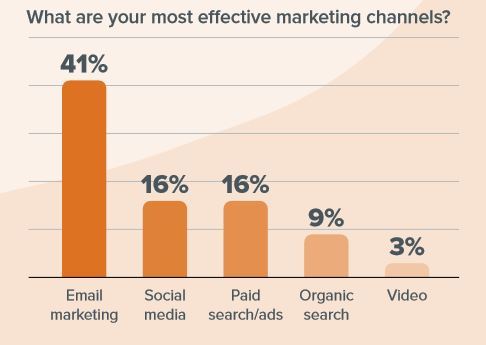
All things considered, these are some pretty impressive statistics.
But before you can start reaping the benefits of this strategy, you’ve got to build an email list, otherwise you’re not going to have anyone to email.
With that in mind, in this second installment of our three-part series on email marketing, I’m going to tell you everything you need to know about building an email list and explain some of what not to do, as well.
What You Shouldn’t Do When You Build an Email List
While there are many different strategies you can use to build an email list, there are also many things you should avoid doing when building one, as well.
Believe it or not, when it comes to email marketing, there are some pretty stringent standards.
You can’t just be sending emails out to random people willy-nilly, and if you do, you may end up dealing with some pretty severe consequences, including fines, lawsuits, and even being blacklisted by internet service providers.
That being said, before I explain what you can do to build an email list, let’s explore what you shouldn’t do.
Buying Email Lists
When trying to build an email list for your business, one of the biggest mistakes you can make is purchasing email lists.
While it might seem like a quick way to grow your list, it usually leads to poor engagement because the recipients haven’t shown any interest in your brand or what you’re offering.
Basically, you’re buying a bunch of random people’s email addresses, shooting emails out to everyone, and hoping that something sticks.
But at the end of the day, you want qualified leads on your list, meaning people who are actually interested in what you have to offer.
And when you’re buying email lists, that is not what you’re going to get.
What’s more, buying email lists can also lead to legal troubles, as many data privacy regulations, such as the General Data Protection Regulation (GDPR) in the EU, the CAN-SPAM Act in the U.S., and Canada’s Anti-Spam Legislation (CASL), require explicit consent from recipients before sending marketing emails, and violations of these regulations can result in hefty fines.
Failing to Use Double Opt-In
If you want to ensure the leads on your list are actually going to be interested in what you’re offering, you should use a double opt-in process, which requires subscribers to confirm their email address by responding to a verification email.
Admittedly, a single opt-in is easier, but a double opt-in helps to ensure you’ll have a higher-quality list, as subscribers are more likely to be genuinely interested and provide a valid email address.
In any case, skipping this step can lead to an increase in spam complaints and a rise in fake or mistyped email addresses, which ultimately affects deliverability and engagement.
Not Offering Clear Opt-Out Options
I know the idea is to get people on your list, and keep them there, but if you want to follow the rules, you’ve also got to give your audience an easy way to unsubscribe.
Because most email regulations mandate that businesses provide subscribers with an easy way to unsubscribe from marketing emails.
As a result, failing to offer clear opt-out options can lead to serious legal consequences, including fines and lawsuits.
And subscribers who can’t easily opt out will be more likely to report your emails as spam, which can seriously damage your reputation and deliverability rates.
Not Keeping Your List Clean
In case you’re not aware, keeping your email list clean involves regularly removing inactive or incorrect email addresses.
This may seem counter-productive, but the truth is, it’s incredibly important because if you send emails to unengaged or incorrect addresses, it’s going to skew your email metrics, which makes it much more difficult to interpret them.
This can result in poor deliverability and misleading data, which can cause you to make poor decisions about the effectiveness of your campaigns, or lack thereof.
Ignoring Data Privacy Regulations
Unfortunately, many businesses fail to comply with the data privacy regulations I mentioned above, including the GDPR, CASL, and CAN-SPAM Act.
These laws require businesses to obtain explicit consent from individuals before adding them to an email list, and failing to comply with these regulations can result in severe financial penalties, including fines of up to $10 million under CASL, for example.
Beyond the legal risks, these violations can seriously harm your company’s reputation, especially today, as consumers are becoming increasingly aware of their privacy rights.
Read: Why Building an Email List Is an Excellent Brand Booster
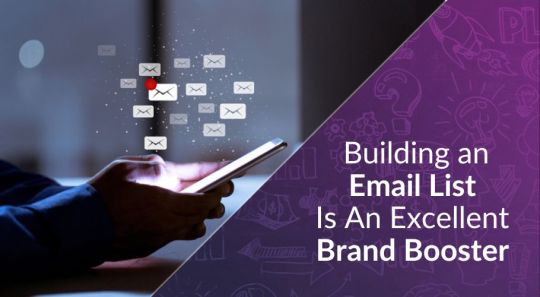
Without a doubt, building an email list is one of the best things you can do to boost the success of your business.
But if you’re new to this sort of thing, you might still be wondering what benefits an email list can actually provide.
With that in mind, this article explores several of the ways that building an email list can benefit your business, including giving you direct access to consumers, driving conversions, and more.
Keep reading here.
What You Should Do When You Build an Email List
You may not realize it yet, but as you grow your email list, you’ll be building one of the most powerful marketing assets available – one that allows you to nurture leads, build relationships, and drive sales.
However, building your email list is going to require a significant amount of time, strategy, and consistency.
With that in mind, below I’ve offered several tips on how to build an email list for your business.
Create High-Value Content and Lead Magnets
One of the most effective ways to build your email list is by offering valuable content in exchange for people’s email addresses.
This kind of content, which is often called a lead magnet, is designed to attract potential customers by providing something they want or need. Lead magnets can take on many forms, including:
eBooks: This kind of lead magnet gives you the opportunity to provide in-depth knowledge on topics that are relevant to your industry. For example, we offer a free eBook for new subscribers called the 7-Step Guide to Defining a Compelling Brand Identity.
Checklists: Simple, actionable checklists also make great lead magnets, as they’re easy for subscribers to digest and can be very helpful. For instance, a fitness coach could offer a weekly meal prep checklist to attract health-conscious subscribers.
Webinars: Hosting a free educational webinar or online course is another great idea for a lead magnet, as it allows you to provide valuable knowledge in exchange for an email. Then, after the webinar, you can nurture those leads through follow-up email campaigns.
Templates: Templates also offer a quick and useful resource that’s typically used as a lead magnet. For example, a content writer could offer blog or email marketing templates.
Discounts or Promotions: Retailers can also attract subscribers by offering exclusive discounts or special offers in exchange for an email address.
At any rate, lead magnets must align with the interests and needs of your target audience, and ideally, they should solve a problem, provide valuable insights, or simplify a task for potential customers.
Use a Clear and Compelling Call-to-Action (CTA)
No matter what you’re offering in exchange, a clear and compelling call-to-action is critical for encouraging people to give you their email address.
And regardless of whether it’s a button, form, or link, the CTA should stand out and clearly communicate the benefits of subscribing.
For example, instead of using generic phrases like “Sign Up” you should use action-oriented and benefit-driven CTAs like:
Get Your Free eBook Now!
Subscribe for Exclusive Discounts
Receive Weekly Tips to Improve Your [Skill/Product]
In any case, you should also make the CTA visually prominent by using contrasting colours, large fonts, and strategic placement on high-traffic areas of your website, like your home page, blog pages, and product pages.
Use Social Media to Drive Subscriptions
Social media platforms are a powerful tool for building an email list, as they help drive traffic to your sign-up forms.
That being said, here are some strategies for using social media to grow your email list:
Promote Lead Magnets: One simple thing you can do is to share your lead magnets across your social media channels by including links to your landing page where users can sign up.
Run Contests and Giveaways: Social media contests and giveaways that require people to give you their email address offer another great way to grow your list.
Add a Sign-up Button: Many social media platforms, including Facebook, allow you to add a custom sign-up button that directs followers to your landing page, or wherever you’d like them to sign up.
Use Stories and Live Features: Platforms like Instagram and Facebook offer Stories and live features that can be used to highlight your offers or promote exclusive content, and using these methods, you can direct your audience to a link in your bio or the comments where they can sign up.
Optimize Your Website With Sign-up Forms
Hands down, your website is one of the most valuable assets for building your email list.
That being said, you should make sure you’ve got multiple sign-up forms placed strategically throughout your website to help you capture leads.
Here are some of the key areas where sign-up forms should be placed:
Home Page: If you really want to put it front and centre, you can feature a prominent sign-up form high up on your home page.
Blog Posts: Readers who find your blog content valuable may want more information, so you may want to include email sign-up forms at the top, middle, or end of blog posts.
Pop-ups: Another way to include sign-up forms on your website is by using pop-ups, either when someone comes to your website, or when they’re about to leave, as you can use these pop-ups to promote your lead magnet or offer a discount in exchange for an email address.
Sidebars and Footers: Many websites use sidebars and/or footers to ensure that email sign-up forms are displayed on every page. This way, no matter where a visitor navigates, they always have the option to subscribe.
In any case, all you really need is a first name and email address, and if you ask for too much information, this can discourage users from completing your forms.
So, whatever you do, make sure that the sign-up process is as simple as possible.
Offer Exclusive Content
Exclusivity is another strong motivator for potential subscribers, as it adds even more value to your emails and makes recipients feel like they’re part of an insider group.
Having said that, if this is something you offer, you should let them know that by signing up for your email list, they’ll gain access to exclusive content that isn’t available anywhere else.
Here are some examples of the kind of content that will entice people to sign up:
VIP Sales and Early Access: Offering early access to sales or special promotions is a great way to encourage users to join your list, particularly if you’re in retail.
Behind-the-Scenes Content: Sharing sneak peeks, behind-the-scenes content, or insider info that’s only available to subscribers is another great way to encourage people to sign up.
Premium Articles: If you regularly produce valuable written content, you should consider offering premium blog posts or articles that are only accessible to subscribers. This strategy works especially well for businesses in finance, technology, or marketing.
Run Paid Ads
If you’re looking to grow your list more quickly, you should consider running paid advertising campaigns that specifically target email sign-ups.
For example, platforms like Facebook, Instagram, Google, and LinkedIn allow you to create ads that direct users to a landing page with a sign-up form.
But if you want your ads to be as effective as possible, make sure to take advantage of the targeting options offered by these platforms by using filters like demographics, interests, or job titles, so you can attract subscribers who are interested in what you’re offering and more likely to engage with your brand.
Focus on Quality Over Quantity
While it might be tempting to try to grow your email list as quickly as you can, it’s much more important to build a high-quality list than a large one.
Because a small list of engaged subscribers is far more valuable than a large list of disinterested or unengaged people.
With that in mind, you should focus on nurturing your subscribers by providing valuable, relevant content, and regularly cleaning your list by removing inactive subscribers and email addresses that consistently bounce.
This will help you maintain high engagement rates and avoid any deliverability issues.
Do you need someone to help build an email list? Why not set up a free 30-minute consultation with me to find out how we can help?
To your business success, Susan Friesen
P.S. If you liked the article, you might want to subscribe to our newsletter. We publish tons of valuable content to help you learn more about marketing, and subscribing is the best way to ensure you don’t miss out. Additionally, if you’d like to learn more about building a search engine optimized website, click here for our free website guide.
0 notes
Text
Why Building an Email List Is an Excellent Brand Booster

When you consider the plethora of platforms and myriad marketing strategies that are available today, the thought of building an email list might seem a bit antiquated.
To be fair, if that’s what you’re thinking, I can see where you’re coming from, as email marketing has been around for so long.
Believe it or not, the first use of email marketing was way back in 1978 when Gary Thuerk, the marketing manager for Digital Equipment Corporation at the time, sent a mass email to hundreds of potential clients over ARPANET, which was the precursor to today’s internet.
But just because it’s been around for nearly 50 years doesn’t mean it’s some sort of outmoded, old-school strategy.
In fact, email marketing is still one of the most popular ways to market your business, and one of the best ways to position your brand, and there’s good reason for that.
For example, as you can see from the graph below, data from Statista shows that in 2023, the worldwide email marketing market had a value of 8.3 billion U.S. dollars, and that figure is projected to more than triple by 2030.
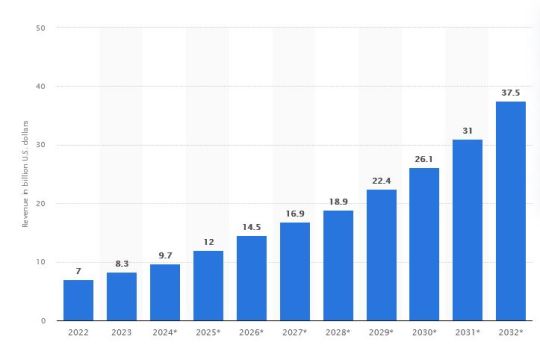
What’s more, a survey from Litmus, which explored email marketing ROI and polled more than 2,000 marketers from around the world, found that for every dollar marketers spend on email marketing, typically, they’re getting $36 back, which is a pretty impressive return on investment.
As you can tell, there’s a reason why email marketing is still as popular as it is.
But if you want to leverage email marketing to position your brand as a leader in your industry, market your business, and communicate with customers, then building an email list is essential.
After all, if you don’t have an email list, then who are you going to be emailing?
With that in mind, in this first installment of our three-part series on email marketing, I’m going to explain the importance of building an email list and explore how email marketing can benefit your brand positioning.
How Can Building an Email List Benefit Your Brand Positioning?
If you regularly read my articles, then I’m sure you’re already well aware of this.
But if you’re just tuning in now, then you might not know what I mean by the term brand positioning.
So, before I go any further, here’s a very brief explanation of what this term means.
Brand positioning refers to how your business is perceived in the minds of consumers, especially in relation to your competitors.
The brand positioning process involves, among many other things, identifying unique values and/or benefits that distinguish your brand from the competition in a way that will resonate with those whom you want to serve.
Now, let’s explore how building an email list can benefit your brand positioning.
Direct Access to Customers
Building an email list gives you uninterrupted access to your customers, which allows you to bypass potential barriers like the algorithms used by social media sites and search engines.
This kind of direct contact not only ensures that your content reaches your audience, but also opens the door for more personalized marketing.
Having direct access to your customers also allows you to do things like use emails to celebrate customer milestones, update subscribers on your latest products and services, and even refer to them by name in your emails.
Each one of these personalized interactions can have a significant effect on whether or not consumers will want to stay connected with your brand, and if your competitors are failing to do this, or not doing it as well as you, then it helps to position your brand as one that cares more about its customers and makes a point of connecting with them.
Customer Segmentation
Segmenting your customers allows you to take a broad email list and transform it into highly targeted groups that will receive emails tailored to their specific needs and preferences.
There are all kinds of different ways to segment your audience, allowing you to separate them based on things like their purchase history, geographical location, engagement level, and more.
Sending anniversary emails with personalized discounts to customers who made their first purchase a year ago, for instance, helps to re-engage customers and prompt repeat business.
This approach not only increases the relevance of your messages but also boosts engagement rates, and your brand positioning, as recipients are more likely to feel that your brand recognizes and values their unique preferences.
Better Brand Awareness and Consistency
Hands down, email marketing is one of the most powerful tools for building brand awareness.
But if you want your brand to be taken seriously, and properly positioned against your competitors, each email should be designed to reflect your brand’s identity, including everything from the logo and colour scheme to the tone of voice and overall messaging.
In any case, regular, consistent communication helps to keep your brand fresh in the minds of consumers, reinforcing your position in the market as a familiar and reliable brand.
And when you continue to use that consistent branding across all of your emails, it can improve your brand positioning by making you look more professional, and helping you build a more cohesive perception of your brand, all of which is crucial for long-term recognition, trust, and loyalty.
Cost-Effectiveness
As I alluded to above, email marketing offers one of the highest returns on investment of any marketing channel.
This is, in large part, due to the fact that it’s usually much more affordable than other strategies, not to mention its high potential for automation, which can be extremely effective.
Automated email campaigns can be triggered based on specific actions, like signing up for a newsletter or abandoning a shopping cart, ensuring that your emails are as timely and relevant as possible.
And when subscribers see that you’re taking the time to reach out to them in these ways, you’re positioning your brand as one that understands their needs and desires.
Building a Community
Building an email list gives you a great way to connect with your clients, but it also offers a platform for cultivating even deeper relationships with them than you could otherwise.
Through regular updates and exclusive offers, you can make your subscribers feel like you’re thinking about them, and that they’re part of your special community.
For example, offering a sneak peek at a new product or a special sale event just for subscribers can enhance your audience’s feelings of exclusivity and privilege, giving them more reasons to do business with you rather than your competitors.
These kinds of tactics not only work to increase your sales but can also reinforce long-term loyalty by rewarding your subscribers for their continued engagement with your brand.
Driving Conversions
A well-maintained email list can be a potent tool for increasing sales, or any other kind of conversion, for that matter.
For instance, things like tailored promotions, reminders of limited time offers, and personalized product recommendations can encourage your subscribers to take action.
Strategic emails like these are great for driving any kind of conversion, as they provide all the necessary information and motivation right where the decision happens: in your subscriber’s inbox.
And if you can make things this easy for them but your competitors are failing to do so, then your brand will be positioned as the more convenient option.
Read: Why Am I Losing Newsletter Subscribers? 6 Reasons Why People Unsubscribe and What You Can Do About It
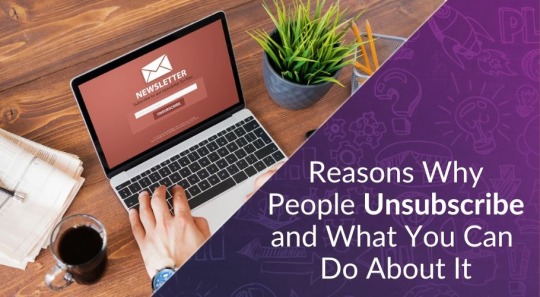
If you’re interested in building an email list, chances are you’re thinking about sending out a newsletter, or maybe you already have one.
But whether you’re new to the world of newsletters, or you’ve been doing it for a while, when people start unsubscribing, you’re going to want to know why.
With that in mind, this article explains why you might be losing subscribers, and offers tips on how to stop people from unsubscribing, like segmenting your audience, using compelling subject lines, and more.
Keep reading here.
Leveraging Newsletters for Better Brand Positioning
An article about building an email list just wouldn’t be complete without talking about the importance of newsletters.
Newsletters are one of the most effective email marketing tactics, not least because they can play a critical role in strengthening your brand positioning.
A well-crafted newsletter can serve multiple strategic purposes – from connecting with your current and past clients to sharing your insights and expertise with new subscribers, and more.
With that in mind, here are the benefits of newsletters, as they pertain to your brand positioning:
Educational Content
One of the most significant benefits of newsletters, as they pertain to your brand positioning, is their ability to educate your audience about your products, services, and industry.
By providing valuable and relevant information, your brand can position itself as an authority in your field, which not only builds trust with your audience but also sets you apart from competitors.
For example, a company specializing in eco-friendly products could share things like the latest sustainability research or insights into industry regulations.
This kind of content is great, as it not only informs but also engages your audience by aligning with their values and interests.
Product Updates and Announcements
Newsletters also offer you the chance to introduce new products or services, and provide updates to existing offerings, or special promotions.
And by using your newsletters to introduce innovations or enhancements, this helps you to reinforce your brand’s reputation for staying ahead of the curve and keeping the needs of your readers at the forefront, which definitely can’t hurt your brand positioning.
Regular updates also help to keep your audience engaged, excited about what’s coming next, and remind them of the continuous value your brand offers.
Consistent Engagement
Maintaining regular contact with your audience through newsletters helps keep your brand top-of-mind when your competitors may be failing to do so.
What’s more, the consistent delivery of valuable content ensures that your brand remains relevant to your subscribers, making it less likely that they’ll want to switch to your competitors.
Furthermore, the regularity of newsletters means you can continually optimize your approach based on engagement metrics and feedback, which allows you to refine your content to better meet the needs and preferences of your audience.
Facilitating Customer Feedback
Sending out newsletters also gives you the opportunity to gather feedback from your customers, which can be invaluable when you’re trying to figure out how to position your brand in relation to your competitors.
Simple tools like surveys can make it easy for your subscribers to share their opinions with you, which helps you gather insights into what content works, what doesn’t, and what your customers truly want.
This feedback is also crucial for improving your offerings and adapting to the needs of your customers, and soliciting feedback via email demonstrates that your brand values customers’ input and is committed to continuous improvement.
Looking to start building an email list? Why not set up a free 30-minute consultation with me to find out how we can help?
To your business success, Susan Friesen
P.S. If you liked the article, you might want to subscribe to our newsletter. We publish tons of valuable content to help you learn more about marketing, and subscribing is the best way to ensure you don’t miss out. Additionally, if you’d like to learn more about building a search engine optimized website, click here for our free website guide.
0 notes
Text
How a Fall Financial Review Can Help You Boost Your Revenue This Holiday Season
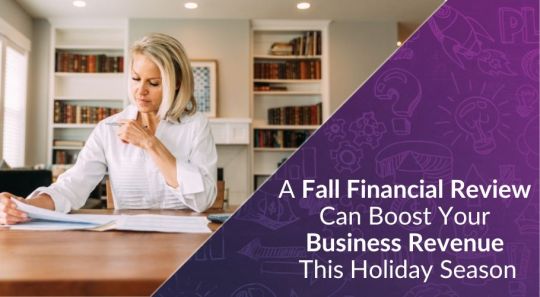
With fall just a couple of days away, and the holidays closing in fast, you’re probably looking forward to some much-needed rest, relaxation, and time with family.
But if you own a business, before you can enjoy any of that, you’ve got to get through what is likely your busiest time of the year.
And whether it’s the pressure to meet increased demand, working longer hours, ensuring sufficient staffing, dealing with inventory issues, or something else entirely, this time of year can overwhelm even the most seasoned business owners.
With that in mind, rather than waiting until it’s too late, and scrambling at the last minute, now’s the perfect time to set your business up for success with a fall financial review.
To be fair, when there’s this much going on, it might seem like there’s no time for this sort of thing, but if you put a solid strategy in place by doing a financial check-in now, you can avoid a ton of stress later on and ensure you and your business are ready to make the most of the holiday rush.
So, if you’re ready to increase your profits over the holidays, gain greater clarity, make more informed decisions, and start the season feeling more confident and organized, you’re going to want to keep reading.
Harvest More Revenue During the Holidays With a Fall Financial Review
If you want to be in a better position to handle the hustle and bustle of the holiday season, and have greater peace of mind as it arrives, preparing ahead of time with a fall financial review is one of the best things you can do.
Taking the time to do this will allow you to enter the holidays feeling more organized, less stressed, and ready to capitalize on the holiday rush.
With that in mind, the following tips will help you assess the financial health of your business, identify potential problem areas, and be as prepared for the holidays as you can possibly be.
Review Your Financial Statements
If you want to conduct a thorough financial review, your first step is to take a detailed look at your financial statements, including your balance sheet, income statement, and cash flow statement.
Each of these documents provides crucial insights into the financial health of your business, and here’s how:
Balance Sheet: This document shows your business’ assets, liabilities, and equity at a specific point in time.
Reviewing this is important, as it will help you understand how much capital you have available and what debts need to be settled before the holiday season.
Income Statement: Your business’ revenue and expenses over a specific period of time are reflected on this document, and reviewing it can help you identify trends in revenue and expenses, which is especially important as you prepare for the potentially high expenses and revenues that go along with the holiday season.
Cash Flow Statement: Cash flow is king, particularly during the busy holiday season, and a thorough review of your cash flow will help you determine whether you have enough liquid assets to cover increased operating costs during the holidays for things like extra inventory, seasonal staffing, and marketing campaigns.
Identify Opportunities to Reduce Costs
Once you’ve reviewed your financial statements, it’s now a good time to look for opportunities to reduce unnecessary costs.
With that in mind, here are some areas where you might find savings:
Inventory Management: Over-purchasing inventory for the holidays can lead to excess stock and tied-up capital, but by analyzing your sales trends from previous holiday seasons, you can make more informed purchasing decisions and reduce waste.
Subscriptions and Recurring Expenses: Many business owners pay for recurring services that they may no longer need or can downgrade.
That being said, this is the time to audit those expenses and eliminate or reduce them wherever possible.
Streamlining Operations: In an effort to reduce costs, you may also want to consider automating certain aspects of your business, like accounting or customer service, which can save you a ton of time and money in the long run, especially as demand increases during the holidays.
Finding ways to save in these areas is important for a fall financial review, as it allows you to reinvest that money in things like marketing or extra staff, which will directly contribute to your success this holiday season.
Set Realistic Revenue Goals
The holiday season is a great time to boost your revenue, but it’s important to set realistic revenue goals that are based on your past performance and current market conditions.
Having said that, here’s how to establish clear, actionable targets:
Analyze Past Holiday Sales: Start by looking at your sales data from previous holiday seasons so you can identify which products or services sold the best and which months or weeks saw the highest sales volume.
This will help you predict demand and set sales goals for the upcoming holiday rush.
Consider Market Trends: Next, you should think about whether there are any emerging trends in your industry that could impact holiday sales.
For instance, if you own a retail business, you might want to ask yourself if there are specific products that are predicted to be in high demand.
In any case, considering these aspects will ensure your revenue goals are grounded in reality.
Factor in External Challenges: Things like inflation, supply chain disruptions, and changing consumer behaviours can all impact holiday sales, so make sure to account for these external factors when setting your revenue targets.
Then, once you’ve established your revenue goals, try breaking them down into smaller, more manageable targets.
For instance, you can set weekly or even daily sales targets to help you stay on track.
Read: 10 Tips to Help You Get Back to Business This Fall
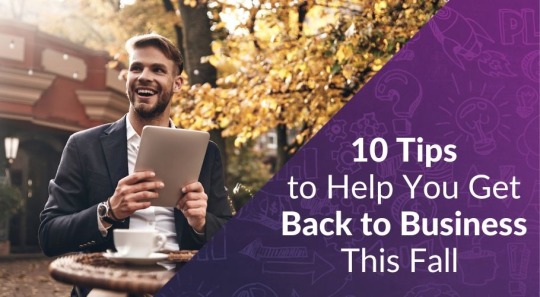
While they are extremely important, as a business owner, you’ve got more to worry about than just your finances.
And whether you’re organizing tasks, updating your website, dealing with scheduling, or something else altogether, the fall is a great time to focus on your business.
With that in mind, this article offers advice on how to get back to business this fall, so you can move into the holiday season with the best chance to succeed.
Keep reading here.
Assess Your Cash Flow and Plan for Extra Expenses
The holiday season often requires additional spending on everything from inventory to seasonal employees.
So, after reviewing your cash flow, you should begin to plan for these extra expenses.
That being said, here are some key considerations to make regarding cash flow and extra expenses during the holidays:
Holiday Inventory: If you sell physical products, now is the time to assess whether you’ll need to purchase additional inventory in order to meet holiday demand.
In doing so, make sure to use your past sales data so you can make smart purchasing decisions, avoiding both stockouts and overstocking.
Marketing: The holidays are a competitive time, so investing in marketing is essential.
As such, you should allocate part of your budget for holiday-specific marketing efforts, as running targeted holiday promotions, social media campaigns, or even paid ads during this busy time can significantly boost your revenue over the holidays.
Seasonal Staffing: Depending on the nature of your business, you may need to hire temporary staff to help manage the holiday rush.
If this is the case, make sure to plan for these additional payroll expenses during your financial review, and ensure you have enough capital to cover them.
Emergency Fund: It’s always a good idea to have an emergency fund in place, especially during the holiday season, as unexpected expenses, like shipping delays, vendor issues, or equipment breakdowns can arise.
At any rate, having a financial cushion will ensure that these problems don’t derail your business during the holidays.
Audit Your Payment Processes
During the holiday season, your sales volume will more than likely increase, so now is a great time to audit your payment processing systems and ensure everything runs smoothly.
Here’s what you’re going to need to consider:
Payment Options: Are you offering a variety of payment options to accommodate all types of customers?
Consumers appreciate the flexibility to pay with credit cards, mobile wallets, and other digital payment methods, and if you don’t offer it, they may choose to go elsewhere.
So, if you want to avoid turning customers away, you should make sure you’ve got a seamless, secure payment system that will accept all forms of payment.
Fees and Costs: Payment processing fees can add up, especially during the holiday season when transaction volumes increase.
Having said that, you should look for opportunities to negotiate better rates with your payment processor or explore alternative providers that might offer lower rates.
Security: With increased transactions comes a heightened risk of fraud, so it’s crucial that you make sure your payment systems are up to date with the latest security protocols so you can protect your business and your customers from any data breaches or fraudulent activities.
Revisit Your Pricing
As part of your financial check-in, it’s worth revisiting your pricing strategy ahead of the holidays.
The increased demand during this time offers a great opportunity to adjust prices, but it’s important to do so strategically by doing things like:
Seasonal Promotions: Offering limited-time discounts or bundled deals can entice customers to spend more during the holiday season. But you should make sure that your promotional prices still allow for healthy profit margins.
Price Adjustments for Increased Costs: If you anticipate higher costs for inventory, staffing, or shipping, you might want to consider adjusting your prices accordingly.
However, you should be mindful of not pricing yourself out of the market and conduct competitive research to make sure your prices remain attractive to consumers.
Plan Your Marketing Strategy
If you want to increase your profits during the holidays, a robust marketing strategy is essential.
So, during your fall financial check-in, make sure to allocate some funds for your holiday marketing efforts and ensure your strategy is well-planned. Here are some ideas:
Email Campaigns: Email marketing offers a great way to start building excitement with a series of holiday-themed email campaigns. These emails can offer sneak peeks of upcoming deals, special promotions, or gift guides to entice your audience to spend more.
Social Media Promotions: You can also use social media to engage your audience and boost holiday sales with festive content, giveaways, and limited-time offers.
Moreover, paid ads on platforms like Instagram and Facebook can also help you to drive traffic, increase visibility, and boost your revenue over the holidays.
Website and eCommerce Readiness: This goes without saying, but you should ensure your website and/or eCommerce platform is ready to handle the increased traffic that comes during the holiday rush, as a smooth, user-friendly experience can boost conversion rates and entice customers to keep coming back over the holiday season.
Collaborations and Partnerships: Another great marketing strategy, especially during the holidays, is to partner with complementary businesses for cross-promotions.
For example, if you sell home décor, you might want to consider teaming up with a local florist or furniture store to offer joint discounts.
Referral/Loyalty Programs: One of the best ways to encourage word-of-mouth is by offering incentives to existing customers who refer friends or family, as a discount for both the referrer and the new customer can be a powerful motivator.
What’s more, you can also boost repeat business by offering loyalty points or discounts to customers who make multiple purchases during the holiday season.
Influencer Marketing: Collaborating with influencers who are relevant to your industry can help give your brand additional exposure, as they can showcase your offerings in holiday gift reviews, explainer videos, and other festive content.
In any case, by reviewing your financial statements, and doing things like cutting unnecessary costs, setting realistic revenue goals, planning for seasonal expenses, and strategically marketing your business, you can ensure a more successful and profitable holiday season.
And with the right strategies in place, you can avoid the stress that comes with the holiday rush, and instead, turn it into a season of growth and opportunity for your business.
If you’d like to share the results of your fall financial review, go ahead and leave a comment below. I’m interested to know how it goes!
Looking to boost the success of your business? Why not set up a free 30-minute consultation with me to find out how we can help?
To your business success, Susan Friesen
P.S. If you liked the article, you might want to subscribe to our newsletter. We publish tons of valuable content to help you learn more about marketing, and subscribing is the best way to ensure you don’t miss out. Additionally, if you’d like to learn more about building a search engine optimized website, click here for our free website guide.
0 notes
Text
Top Tips on Blogging to Keep Your Audience Engaged and Coming Back for More

Whether you’re a seasoned blogger or you’re just starting out, keeping your audience engaged can be incredibly challenging.
Consistently coming up with fresh ideas can be draining, and even with the best of intentions, blogs can sometimes fall flat, leaving your readers disengaged or worse, clicking away from your website without giving it a second glance.
Moreover, with so many voices competing for attention, standing out requires more than just good writing – it demands creativity, strategy, and a deep understanding of your audience.
Still, even with all these challenges, companies continue to invest in content marketing strategies, like blogging, and that’s because they work.
For example, the results of a recent Bynder survey are very telling.
The vast majority of marketers who responded to this survey, which polled more than 1,200 marketing professionals, have a strategic interest in content marketing, with 86% of CMOs saying they plan to either maintain or increase their investments in it.
What’s more, as you can see from the graph below, even with the economic downturn we’re seeing today, most marketers surveyed said that as a result of these economic conditions, their organizations have actually increased their investments in content.

But of course, if you want to see results from your blogging efforts, you’ve got to understand how to write an engaging blog, and what makes a good blog post.
Even if you think of yourself as a writer, blogging is a very different animal, which requires some special know-how.
With that in mind, I want to offer some tips on blogging to help you give your audience what it wants by consistently creating great content.
So, if you’re wondering how to keep your audience engaged, and want to know how to write better blog posts, keep reading to learn more.
Read: How the Benefits of Blogging Can Seriously Help Your Website and Boost Your Business in 2024

If you’re looking for tips on blogging, chances are you’re well aware of how it can benefit your business.
But maybe you haven’t taken the time to explore this, or you need a reminder of why it’s so important.
Whatever the case, this article explores the benefits of blogging, including better SEO, more website traffic and leads, improved relationships with customers, and more.
Keep reading here.
8 Tips on Blogging to Keep Your Audience Engaged
Whether you consider yourself a writer or not, if you have a website for your business, you should be blogging.
But trying to consistently come up with content that will keep your audience engaged can feel like a losing battle.
With that in mind, below I’ve offered several tips on blogging, so you can make your blogs more engaging and entice people to come back to your website and read more.
1) Update Your Blog Frequently
I know it sounds harsh, but if you’re not going to update your blog frequently, you’re probably just wasting your time.
But why is that?
Well, there are two reasons to add new posts to your blog on a frequent and consistent basis.
The first one being that if someone visits your blog and sees that the last article posted was six months ago or more, then their immediate impression might be that you’re no longer in business, or at least no longer maintaining your website, which is always a bad look.
Believe it or not, people’s reaction can be that drastic!
Most people won’t assume that you’re too busy to tend to your blog, but what they will assume is that you’ve abandoned your website, and therefore your business.
In my experience, most people tend to believe that how you do one thing is how you do everything, so if you’re publishing blogs haphazardly, putting out poorly written content, or not even blogging at all, that will reflect on your business whether you want it to or not.
Plus, if you’re not regularly publishing content, and staying top of mind with your audience, eventually, they’re going to forget about your blog and move on to the next thing.
The other reason to frequently update your blog is for Search Engine Optimization (SEO) purposes.
Because the more you write and post successful blog articles, the more Google and other search engines will see that you’re actively updating your website, and they tend to reward fresh content and websites that stay updated with higher search rankings, which makes it easier for people to find your website.
Now, if you want to stay consistent, you should make a posting schedule and stick to it!
But how often should you post?
Let me put it this way: Once a month is better than every six months, once a week is better than once a month, and multiple times per week is better than once a week.
You get the idea.
2) Provide Quality Over Quantity
As important as it is to post frequently, and regularly, if the content you’re posting isn’t any good, it’s not going to matter when you post it.
Having said that, you should post as much as you possibly can, but the content you post has to be excellent.
The key word here is quality. You want your blog posts to be engaging and valuable to the reader. This isn’t a space to wax poetic or list what you had for dinner last night.
This is your space to showcase your expertise and explain what your offerings can do for potential customers.
So, if you want your blogging efforts to be successful, you’ve got to write about topics that your target audience wants to learn about, and that’s why understanding your audience and knowing who your ideal clients are is critical.
You want to write about things that potential and existing customers will find interesting, valuable, informative, entertaining, and/or captivating.
You should write for your target audience, not for yourself, and not for the sake of having something posted, or to create glorified sales pitches for your products.
In doing so, when you’re writing something, you should always ask yourself what you want your readers to get out of it and what you want them to do or know after they’ve read it.
3) Try to Focus on One Topic Per Post
I get it. You’re passionate about your business, and when you sit down to write, you want to share every thought that comes into your head.
That being said, it’s great that you’re so passionate. And it’s great that you have so many ideas.
But you shouldn’t try to squeeze them all into one post.
In fact, it’s much better to stick to one topic or point for each blog you publish.
For one thing, it’ll help Google understand what your post is about, which makes it easier to connect with the right audience, as they’ll be looking for articles on that topic.
But it’s also easier to keep people engaged and hold their attention when you stick to one topic.
Plus, if the title of your article implies that it’s about one thing, but the reader finds out it’s a meandering mess of disparate topics, you’re going to annoy them, and at that point, they’re probably not going to return to your blog.
This might turn out to be harder than you’d think, and if you’re anything like me, that one specific topic will make you want to explain everything related to it and the next thing you know, you’re going down a massive rabbit hole.
But luckily, you can save all those ideas and rabbit holes as ideas for new blogs!
4) Include Relevant Images
If you want your blog posts to be engaging, images are a must.
Not only do images help your readers get a visual idea of what your article is about, but they also help to break up the text, emphasize important points, and create something that looks more interesting than just a massive wall of text.
But make sure the images you’re using are high-quality, in focus, and relevant to what you’re writing about.
Otherwise, you’re going to confuse or annoy the reader, who’s not going to appreciate looking at pixelated, blurry images that have nothing to do with your article.
Ideally, each article should have an appealing display image (or “hero image” as we call them), which will entice people to click on it, and you should also include a couple more images throughout each article to break up the text.
Using images in your blog posts is also one of the simplest things you can do to make your website more popular – both with users and with search engines, as they both appreciate attractive websites with lots of imagery.
5) Don’t Use Third-Party Blogging Services
Whatever you do, make sure to host your blog on your own website, and avoid using third-party services like Tumblr for your business blog.
Unfortunately, because these services are free and usually easy to set up, they can be very tempting to use.
But what you’re doing when you use these services is sending people to their platforms instead of your website – and at the end of the day, bringing traffic to your website is one of the main reasons why you should be blogging!
So, don’t leave the SEO benefits of blogging on the table.
If you have a blog, it should be housed on your website, and nowhere else.
6) Fix the Spelling and Grammar Mistakes
Honestly, this shouldn’t even have to be said. But, oh my goodness, does it ever need to be said!
I remember once reading someone’s blog post and the grammar mistakes made it so hard to read that I gave up. The irony is, she was a copywriter!
Can you guess what impression her readers have on her ability to write? Probably not so great.
Even if you’re not a writer trying to sell your services, publishing blog posts that are riddled with errors is going to reflect negatively on you and your business, because it looks like you either don’t know or don’t care about this sort of thing.
Understandably, not everyone has a degree in English. I don’t either.
And if you look hard enough, you’ll find mistakes in my writing.
But that’s not the point here, nor the expectation. The goal is to write something that is very readable and not full of obvious mistakes.
So, if you’re one of those people who has great ideas and lots of information to share but you’re terrible in the English department, it might be time to hire someone to help you.
We do this a lot for our clients – they’ll send us a rough draft, and then we’ll edit it, SEO-optimize it, make it look pretty, and add it to their blog.
Easy-peasy for the non-writer.
7) Make Your Blogs Easy to Scan
When you take the time to write a great article for your blog, you want to make sure people actually stick around long enough to read the whole thing, right?
Aside from having a compelling title, beautiful imagery, and a well-written article, another way to keep your audience engaged and coming back for more is to make your blog posts easy to scan.
Like it or not, the reality is very few people read anything online word for word, so it’s critical to ensure your main message comes across, or that there’s at least an indication of the various sections of the article when someone scans it.
To do this, it’s best to break up the text with headings, subheadings, bolding, images, and bullet points. But don’t overdo it on the bullet points!
I’ve come across many people who hear that they should use bullet points in their articles and then end up writing practically the entire thing like that.
Don’t be that person!
8) Create Long-Form Content
How do you truly captivate your audience?
Typically, it’s by connecting with a fascinating story, a personal anecdote, or by impressing with your expertise.
And in all of these cases, a few hundred words probably isn’t going to cut it.
No matter what the topic is, you don’t want to drone on and on, but as long as the level of quality remains the same, your articles will be better if they’re longer, as they’re just offering more value to the reader.
Plus, once you’ve done all that fancy formatting, readers will be able to scan your article, reading only the parts that are relevant to them, and they’re going to appreciate that.
What’s more, they’ll probably remember that, and as a result, they might come back to your blog.
And a word to the wise: when it comes to SEO, the longer the article, the better (assuming, of course, that it’s also well written and interesting).
I know. It’s a big puzzle to put together.
You have to post frequently, and you also have to post long articles, but those articles also have to be nicely formatted, well-written, and appealing to your target audience.
Phew!
Do you need help creating content that will keep your audience engaged? Why not set up a free 30-minute consultation with me to find out how we can help?
To your business success, Susan Friesen
1 note
·
View note
Text
9 Lead-Generation Strategies to Help You Make More Sales
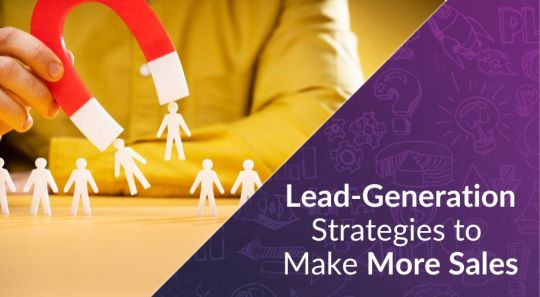
No matter what you’re selling, marketing is the cornerstone of your business.
Without it, it’s going to be tough to connect with consumers, and next to impossible to keep your business going.
But if you put some solid lead-generation strategies in place, you can ensure a steady stream of customers that will help you make more sales and keep your business running for years to come.
The term lead generation, also called customer acquisition or list building, refers to the process of attracting interested consumers to your business and nurturing relationships with them, with the end goal being to convert them into paying customers.
But with today’s consumers having more options than ever, you’ve got to get this right, as connecting with the right consumers, or failing to do so, can make or break your business.
However, simply building that list and connecting with potential leads isn’t enough.
You also need a plan in place to actively nurture those leads and convince them to convert, but many fall short of this critical step.
So, if you’re struggling with how to make more sales, and you’re looking for lead-generation strategies to help you bring in more business, you’re going to want to keep reading.
Read: Maximizing Your Website’s Potential: How to Get More Leads and Conversions Using This Simple Strategy

You can spend every waking hour learning how to generate leads, but if your website gives people the wrong impression, it’s not going to matter.
Like it or not, consumers expect your website to offer a great experience, and when they don’t have one, this can erode their trust in your business.
With that in mind, this article explains the importance of having a website that helps build trust and offers several tips to help you create a website that does just that.
Keep reading here.
Lead-Generation Strategies to Help You Sell More
Now that you know why lead generation is so important to the success of your business, you’re probably wondering how you can start generating all those leads and making more sales.
With that in mind, below I’ve explained some of the best lead-generation strategies that you can use to connect with consumers and ensure a steady stream of customers for your business.
1) Content Marketing
When it comes to lead-generation strategies, content marketing is arguably one of the most powerful approaches.
For instance, regularly publishing informative blog posts (like this one), that address your target audience’s pain points can help you attract organic traffic to your website.
And if people like your content, that might entice them to come back to your website for more, sign up for your newsletter, or even consider purchasing your products or services.
But if you want to ensure your content ranks well in search engines, so people can actually find it, make sure to SEO-optimize your blogs by breaking up the text with headings, including relevant keywords, and ensuring paragraphs are no longer than 1-2 sentences.
This will ensure your content is easy to read, simple to skim through, and will look good no matter what device you’re using.
2) Email Marketing
Email marketing is another great lead-generation tactic, not least because it allows you to reach your audience directly, and it pairs particularly well with content marketing.
For example, you can send out a newsletter that links to a blog article you’ve written, which encourages recipients to go to your website, consume your content, and if all goes well, become one of your clients or customers.
And by segmenting your subscribers based on their interests and behaviours, you can send personalized content that resonates with your subscribers on a very deep level.
Automated email campaigns can further enhance this strategy, but we’ll get into that a bit more in a minute.
3) Free Giveaways
One of the dilemmas of email marketing is how to get people to give you their information.
In my experience, very few people will actually do this on their own without any incentive, so what we typically do is offer some sort of free giveaway in exchange for users’ contact info.
Usually, the giveaway is some sort of report, white paper, or guide in the form of a downloadable PDF, access to a webinar or video, or something like that.
But whatever you choose to do, what you’re giving away should be something that’s absolutely irresistible to your audience, otherwise people aren’t going to bother signing up.
What’s more, you’ve got to make sure it’s relevant to what you do, otherwise you’re going to end up with a bunch of unqualified leads who likely have little or no interest in what you’re offering.
4) Email Automation
Once someone has given you their information, you can’t just sit and wait for them to contact you.
Email automation allows you to write a series of prescheduled auto-responder emails that will get sent to your subscribers at predetermined intervals.
These emails can link to additional information that can add even greater value to your giveaway, like related blog articles or videos, an invitation for a free consultation, or a “welcome package” for new subscribers that contains special offers and bonuses.
This can help you save a ton of time when nurturing leads, as you don’t have to reach out personally for each and every email, and you can just sit back and let the automation do its thing.
5) Social Media Marketing
Actively engaging with your audience on platforms like Facebook, TikTok, and Instagram allows you to establish an emotional connection with your followers, which can help you gain more leads and make more sales.
You can do this by sharing relevant content, responding to comments, and participating in conversations related to your industry, which shows your followers what you’re all about and can help them decide if they’re interested in what you’re offering.
Paid social ads are another effective tool for generating leads, which allows you to target a specific audience and then direct them to a landing page where they can learn more about what you do and sign up for your offerings.
The key is to focus your attention on the platforms where your target audience is spending their time.
6) Social Media Outreach
Another great lead-generation strategy is to reach out directly to your social media followers.
For example, when a follower leaves a comment on your social media, you can send them a private message to tell them that you agree with them or compliment them on how insightful they were.
Then, you can offer them a free consultation, a discount on one of your products or services, or something else of value as a thank you for their engagement.
You can also gather the contact info of those in your audience who have liked and/or commented and email them a personal note thanking them for being a fan and offering a special “insider discount” or something exclusive that they just can’t resist.
But remember, it’s against the law to automatically add people to your email list without their consent, so this can only be done by individually emailing these people.
You should also be careful to use this approach without the intention of trying to sell them something, and make sure to be genuine and authentically interested, so you can avoid turning them off right away.
7) Search Engine Optimization (SEO)
Search Engine Optimization (SEO) is crucial for improving your website’s visibility and is therefore a key component of any effective lead-generation strategy.
On-page SEO, for example, which includes optimizing your content, meta tags, and URLs, can help your website rank higher in search engine results, and targeting keywords that potential leads are searching for can increase your chances of attracting the right audience.
For businesses that serve specific geographic areas, local SEO is essential, so if this is what you do, make sure to include geographical keywords in your website content that are relevant to the areas you serve.
You should also ensure that your Google My Business profile is optimized, and if you encourage satisfied customers to leave reviews, it can significantly improve your local search rankings, which may help you generate more leads, and in turn, make more sales.
8) Pay-Per-Click Advertising (PPC)
Pay-per-click (PPC) advertising, particularly when it’s done through Google Ads, is another incredibly effective lead-generation strategy.
This tactic allows you to run targeted campaigns for the most relevant keywords, ensuring that your ads appear at the top of the search results when people search for those terms.
Retargeting ads can also be highly effective, as they allow you to reach out to people who have previously visited your website but didn’t convert, keeping your business top of mind and encouraging them to return and make a purchase.
9) Be Consistent
If you want your lead-generation strategies to be successful, you can’t just sit on your email list waiting for something to happen.
You’ve got to engage your audience often and on a regular basis, otherwise they may end up forgetting who you are or losing interest in what you have to offer.
But regardless of which tactics you’re using to generate leads, make sure to interact with your audience regularly.
So, if you’re focusing on content marketing by publishing blogs, or email marketing by sending out newsletters, try to publish on a regular basis, at least once a month.
If you’re focused primarily on social media, you’ll have to publish content more regularly, but the same rule applies. If you’re posting three times per week, do it faithfully and consistently.
Whatever you choose to do, if you want to generate high-quality leads and make more sales, make sure to be consistent when interacting with your audience.
Do you need some help coming up with lead-generation strategies? Why not set up a free 30-minute consultation with me to find out how we can help?
To your business success, Susan Friesen
P.S. If you liked the article, you might want to subscribe to our newsletter. We publish tons of valuable content to help you learn more about marketing, and subscribing is the best way to ensure you don’t miss out. Additionally, if you’d like to learn more about building a search engine optimized website, click here for our free website guide.
0 notes
Text
9 of the Best Organizational Tools for Business to Help You Stress Less and Achieve More

No matter how you slice it, running a business is one of the most stressful things you’ll ever do.
Whether it’s dealing with cash flow, finding and retaining customers, scaling your business, or something else entirely, as a business owner, you’ve got a to-do list that never seems to end.
And with all of this on your plate, it’s easy to get overwhelmed, disorganized, and stressed out.
What’s more, if you’re working with a remote team, like I do, then things can quickly get even more difficult to deal with.
But, as I’ve learned over the years, if you make use of the best organizational tools for business, coupled with some solid planning and patience, you can become more productive, get everything organized, and in doing so, relieve much of your business-related stress.
I don’t claim to be immune to this sort of stress, but after more than 20 years of working in this industry, I’ve got a pretty good system in place that allows me to relax and achieve much more than I could in the past.
Since this is what I’m most familiar with, and it’s worked so well for me, I figured I should detail some of the stress-reducing business tools we use here at eVision Media to keep everything organized and accomplish more.
So, if you want to learn about some of the best organizational tools for business, and how they’ve helped me and my team, then keep reading.
Read: How Your Small Business Can Easily Leverage AI

But trying to wrap your head around how to use these tools, and understanding what they’re actually capable of, is often easier said than done.
With that in mind, this article explores six ways you can leverage AI and offers advice on how to implement it into your small business.
Keep reading here.
9 of the Best Organizational Tools for Business
No matter what kind of business you own, it’s impossible to keep track of everything, and trying to keep it all organized can feel practically impossible.
But in my experience, if you make use of the best organizational tools for business, you can streamline your business operations and make everything a lot less stressful.
With that in mind, here are nine of the best time-saving and stress-reducing business tools that I use to keep eVision Media operating smoothly:
1) Microsoft 365
At the top of my list of tools is Microsoft 365, which used to be called Microsoft Office (just in case you’re wondering).
This software suite is an integral part of nearly all my daily operations, and the apps I use most frequently are:
OUTLOOK
My Outlook is pretty much always open, as it’s the hub of my operations for my emails, calendar, and tasks.
Whether it’s through the use of email templates, automation options, or meeting scheduling, this tool allows me to be significantly more organized and productive.
I also use Internet Message Access Protocol (IMAP) for my email so I can use Outlook on my iPad and iPhone as well, which allows me to keep all three devices synced at the same time.
EXCEL
Say what you will, but I love lists and keeping things organized.
At this point, I’m basically addicted to using Excel to manage many of my day-to-day operations.
Whether I’m using it to track progress on marketing and social media tasks we’re completing for clients, or for tracking our content marketing efforts, I can’t live without Excel!
WORD
If you own a business today and you’re not using this tool, I don’t know what to tell you.
Word offers a ton of useful features, including templates and themes, collaboration options to track comments and changes on documents, and document management capabilities, making this tool a must-have organizational and productivity powerhouse.
2) Evernote
Evernote is a note-taking and task-management software that allows you to create and archive notes, which can include photos, videos, and saved web content.
I started using Evernote several years ago and have never looked back. What a gem it is for keeping me organized!
There’s a free version and a paid version, but so far, I’ve only needed the free one.
In any case, I love this app, as it helps me to keep track of things like:
CURRENT PROJECTS
I use this notebook to track all of our website development projects, content marketing campaigns, and social media management tasks.
I just love how I can create checklists in Evernote to ensure I have all my bases covered as we work through each part of a project.
And because we can have as many as two dozen projects running at the same time, this system is invaluable for keeping me on top of things without me having to always rely on my memory.
LEADS
This is where I can easily take notes as I’m speaking with a potential client, so I make sure to do proper follow-up and don’t forget any details.
RESOURCES
I use this notebook to save website links, tools, and YouTube videos I want to remember and reference at a later date.
NOTES
I’m always coming up with new ideas and need a place to jot them down, so this notebook is an ideal place for me to add things like newsletter ideas, tips I’ve learned from webinars, and the like.
DAILY TASKS
This is basically my to-do list. I find this one the hardest to keep up with, as sometimes my tasks are completed so quickly, they don’t even make it onto the list!
Evernote also has a handy voice recording feature that I haven’t gotten into the habit of using, but probably should.
Another feature I don’t use much is the ability to share notebooks, but since my team and I use a separate project management tool, I haven’t found a need for this yet.
An alternative to Evernote is OneNote, which comes with Microsoft 365, but I’m a creature of habit and haven’t taken the time to explore it enough and see if it would work better for me.
Why try to fix what’s not broken, right?
3) Project Management
There are a ton of great project management platforms out there today, with each offering slightly different features and functions. Here are a few of the most popular options:
Trello, for instance, has a great notification system, and is quite user-friendly.
Asana, on the other hand, has arguably the best collaboration tools of any project management platform.
Monday.com is also great for real-time collaboration, and it’s one of the cheaper options out there, which makes it great for startups.
To manage our projects, our team uses a centralized project management system called EGroupware.
This is a completely secure, privately accessible system, which allows us to manage our entire team’s daily activities at an operational level, including connecting with team members, managing tasks and contacts, and more.
It may not have all the bells and whistles of some of the newer project management apps, but it’s 100% free open-source groupware, which makes it great for businesses that don’t have any budget for this sort of thing.
4) Time Tracking
For time tracking, most of our team uses a free software called Toggl Track.
Although there is a paid version, we use the free version of this app, and it allows us to track how much time we spend on clients’ tasks down to the exact minute.
This is extremely important for us to stay organized since we charge in 10-minute increments!
Another free time tracker we sometimes use as an alternative is called Clockify.
5) Email Marketing
For our email marketing, we’ve been using Constant Contact for several years now.
It’s quite a robust and affordable platform that allows business owners to send out professional emails with great deliverability rates.
Currently, it has a free and paid version, but keep in mind that the free version paywalls many important features, like scheduling emails, personalizing them, and resending them to non-openers.
However, depending on what you need it for, the free version might be just fine.
But luckily, there are many different email marketing services to choose from.
If you don’t want to pay for a mailer, a great option is MailerLite, as it gives you access to most features, even with the free version.
There are also a ton of other options, as well, including AWeber, ActiveCampaign, and Mailchimp, although I wouldn’t recommend that last option, as it’s not very user-friendly and lacks some of the features offered by other mailers.
6) Publer
When it comes to social media, one of the absolute best ways to reduce stress, be more organized, and accomplish more is to use some sort of scheduling software.
To keep organized and sane with our social media efforts, typically we use Publer, which allows us to pre-schedule many of our posts on Facebook, Twitter, LinkedIn, and Instagram.
Hands down, every business owner and entrepreneur using social media for their marketing efforts should use some sort of scheduling software (there are lots to choose from), not least because it will save you tons of time.
7) Hightail
We often need to send or receive large files to or from clients, which are too big to send via email, so we have a Hightail account that allows us to do this.
I much prefer using Hightail over Dropbox, as it’s quite a bit easier to use, which is extremely important when you’re dealing with clients who aren’t too tech-savvy, as we often do.
8) Team Communications
When communicating with my team outside of our project management system, typically I use either email or Discord, which is a free instant messaging software that facilitates file sharing, text, voice, and video communications.
It’s reliable, free, and allows us to keep everyone on the same page by providing timely updates to our team members.
A great alternative to Discord is Slack, which is slightly different, but it facilitates nearly all the same features.
9) Pen and Paper
Call me old-fashioned, but there’s just something about putting pen to paper.
Despite the long list of software and systems I use every day, I still like to have a notepad and pen handy so I can jot down quick notes on the fly if need be.
I don’t know about you, but for me, there is nothing more satisfying than striking a red pen through tasks on my list as they’re completed.
Need some help organizing your business? Why not set up a free 30-minute consultation with me to find out how we can help?
To your business success, Susan Friesen
P.S. If you liked the article, you might want to subscribe to our newsletter. We publish tons of valuable content to help you learn more about marketing, and subscribing is the best way to ensure you don’t miss out. Additionally, if you’d like to learn more about building a search engine optimized website, click here for our free website guide.
1 note
·
View note
Text
How to Use the Power of Storytelling to Boost Your Brand

There are a million and one ways to promote your brand and what it has to offer.
But no matter how you’re promoting your brand, your efforts can and will be improved by the power of storytelling.
According to Stanford professor Jennifer Aaker, “Stories are remembered up to 22 times more than facts alone,” which explains in large part why they’re so effective when it comes to marketing and branding.
At the end of the day, stories are much easier to relate to than facts and figures, and they can also resonate with people on a deeply emotional level, which makes them easier to retain and more memorable in general.
Donald Miller talked about the power of storytelling in his best-seller, Building a StoryBrand, in which he explores this topic from a marketing and branding perspective.
Miller goes into great detail on how to craft a compelling narrative for your brand, who the characters in that story should be, and what it should focus on, among many other aspects.
If you’re new to this sort of thing, and you’re looking for a good starting point, I highly recommend his book.
But even if you’ve done all this research already, you may still be struggling to come up with ideas for how to create an exciting story for your brand.
So, if you’re looking to unleash the power of storytelling, but could use some tips for storytelling in digital marketing, then this article is for you.
Read: The Power of Narrative: How Building a Brand Story Can Help You Create an Emotional Connection With Your Audience

With that in mind, this article summarizes Donald Miller’s brand storytelling framework and offers tips to help you apply this method to your brand.
What’s more, it provides examples of how we’ve done this for our clients, so you can have a better frame of reference for how this works.
Keep reading here.
Using the Power of Storytelling to Boost Your Branding
Whether you’re doing it through visual storytelling, audio storytelling, or something else entirely, there isn’t a single campaign that can’t be improved through the power of storytelling.
But if you don’t know the first thing about writing a story, or how to apply this to your branding, then your efforts may end up falling flat.
With that in mind, below I’ve offered my top tips on how you can use the power of storytelling to boost your branding.
Understand Your Audience
Before you can tell a story that resonates, you’re going to need to understand your audience.
This is incredibly important, as knowing your audience allows you to create stories that not only capture their attention but also address their needs and desires.
You can do this by conducting market research to gather insights about your target demographics, and their interests, pain points, and values.
Once that’s done, you can then use this information to craft stories that speak directly to their experiences and aspirations.
For example, if your audience consists of environmentally-conscious consumers, your stories should highlight your brand’s sustainability efforts and environmental impact.
To do this, you could share behind-the-scenes stories about your eco-friendly manufacturing processes or spotlight the real-life impact of your sustainable practices on the environment as a whole and in the communities where you operate.
Define Your Brand Story
Every brand has a unique origin story that can serve as the foundation for its narrative.
This story should encompass your brand’s mission, vision, and values. It’s about why you started, what you stand for, and what you aim to achieve.
But remember, as Donald Miller points out in Building a StoryBrand, the hero of your brand’s story should be your customers, not your brand.
So, while things like your values are undeniably integral parts of your brand’s story, you should be focusing much more on your customers because they’re the real stars of the show.
In any case, your brand story should be the guiding light for all your marketing and branding efforts, so you can ensure consistency and authenticity.
For instance, TOMS Shoes has built a story around its “One for One” model, which pledges to donate a pair of shoes to a child in need for every pair of shoes sold.
This narrative not only explains the brand’s mission but also creates an emotional connection with consumers.
And by continually reinforcing this story through various campaigns, TOMS has built a strong brand identity centred around social impact and generosity.
Be Authentic
Authenticity is a key aspect of the power of storytelling, and this is true, regardless of what kind of story you’re trying to tell.
Consumers can quickly detect inauthentic or exaggerated stories, and this can damage your brand’s credibility.
At the end of the day, if it’s not believable or relatable, it doesn’t even matter if it’s true because nobody’s going to believe it anyway.
That being said, you should ensure that your stories are genuine and reflect your brand’s true character and values.
These kinds of authentic stories resonate more deeply with audiences and build trust over time.
For example, Patagonia’s environmental activism is a core part of the story built around that brand.
They consistently communicate their commitment to sustainability through real stories of their environmental initiatives and activism.
Whether it’s through blog posts, social media updates, or video documentaries, Patagonia’s authenticity shines through, making this brand more relatable and trustworthy than others.
Use Customer Stories
Depending on what you do, your customers could be your best storytellers.
With that in mind, whenever possible, you should share their success stories, testimonials, and experiences with your products or services.
This not only provides social proof but also allows potential customers to relate to those stories.
At any rate, user-generated content can be incredibly powerful, as it adds a layer of credibility and relatability that traditional advertising often lacks.
For instance, Airbnb frequently shares stories of hosts and guests, showcasing unique experiences and diverse backgrounds, which reinforces its brand message of belonging and community.
By highlighting these real-life stories, Airbnb creates a sense of authenticity and trust, encouraging more people to join their platform as hosts or guests.
Create a Narrative Arc
A compelling story has a clear structure: a beginning, a middle, and an end.
Having said that, you can create that story by introducing a relatable character (ideally your customer), presenting a challenge or conflict, and showing how the character overcomes it with the help of your product or service.
This kind of narrative arc keeps your audience engaged and invested in the outcome and encourages them to check out what you have to offer and see if it can help them.
For example, a skincare brand could share a story of a customer struggling with skin issues, discovering the brand, and then experiencing a transformation through the consistent use of its products.
This type of narrative could include the initial frustration, the discovery of the brand, the journey of using the products, and the ultimate resolution of healthier, clearer skin.
Leverage Different Mediums
The power of storytelling isn’t confined to just one medium, and you can use a variety of platforms and formats to tell your story.
Videos, blog posts, newsletters, social media updates, podcasts, and infographics can all be effective storytelling tools, as each medium offers a unique way to engage your audience and bring your story to life.
What’s more, experimenting with different formats can help you reach a broader audience and keep your content fresh and engaging.
For instance, Nike uses video advertisements, Instagram stories, and blog posts to share stories of athletes who embody their “Just Do It” philosophy, which helps to inspire its audience across multiple platforms.
By using this mix of visual storytelling and written content, Nike ensures their story reaches a broad and diverse audience.
Incorporate Visual Elements
Visuals play a crucial role in storytelling, regardless of the medium in which it takes place.
Heck, even a novel will have some sort of imagery on at least its front and back covers.
In any case, these kinds of visuals can evoke emotions, illustrate key points, and make your story more memorable.
Visual storytelling can be particularly effective on social media, where images and videos are more likely to capture attention than text alone.
But make sure to use the most high-quality images, videos, and graphics you can, as this will look more professional, and best complement your narrative and engage your audience’s senses.
For example, Coca-Cola’s “Share a Coke” campaign used personalized labels and customer-shared photos to create a visual and interactive storytelling experience.
By encouraging customers to share their photos with personalized Coke bottles, Coca-Cola created a visually engaging campaign that also fostered a sense of community and personal connection.
Engage with Emotional Triggers
Emotions drive decisions, so you should craft stories that tap into your audience’s emotions like joy, surprise, sadness, or inspiration.
This kind of emotional storytelling can create a lasting impact and drive deeper connections with your audience.
So, try to consider the emotional journey you want your audience to experience and how your story can facilitate that journey.
For instance, Dove’s “Real Beauty” campaign focuses on real women and their stories, challenging societal beauty standards and evoking powerful emotions of self-acceptance and confidence.
By highlighting authentic, emotional stories, Dove connects with their audience on a deep level, reinforcing their brand values of inclusivity and self-love.
Be Consistent
Consistent storytelling reinforces your brand identity and builds trust with your audience, but inconsistent messaging can confuse your audience and dilute your brand’s impact.
That being said, if you’re not being consistent, your audience is going to pick up on that very quickly.
So, make sure that your brand’s story is consistently communicated across all touchpoints, from your website and social media to customer service and advertising.
For example, Apple consistently tells the story of innovation, simplicity, and design excellence across all its products and marketing materials.
Whether it’s through product launches, advertisements, or customer service interactions, Apple’s story remains consistent, reinforcing its brand identity and values.
Measure and Adapt
Finally, it’s essential to measure the impact of your storytelling efforts, otherwise you’re not going to know what’s working and what isn’t.
So, make sure to use analytics tools to track engagement, conversions, and other key metrics, gather feedback from your audience, and be willing to adapt your stories based on what resonates most with them.
This type of continuous improvement and adaptation is key to maintaining the effectiveness of your storytelling, as regularly reviewing and adjusting your storytelling strategy helps to ensure it remains relevant and impactful.
For instance, analyzing your social media engagement and website traffic after a storytelling campaign can provide insights into what aspects of the story were most effective, allowing you to refine future efforts.
Need some help building your brand story? Why not set up a free 30-minute consultation with me to find out how we can help?
To your business success, Susan Friesen
P.S. If you liked the article, you might want to subscribe to our newsletter. We publish tons of valuable content to help you learn more about marketing, and subscribing is the best way to ensure you don’t miss out. Additionally, if you’d like to learn more about building a search engine optimized website, click here for our free website guide.
0 notes
Text
11 Tips to Boost Website Traffic for New Business Owners

So, you’re a new business owner, and you’ve finally got your website up and running.
You’ve worked hard and invested a lot of time and money in making that happen, but even after all that effort, nothing much has happened.
You’re not being flooded with new leads, orders aren’t pouring in, and the phone hasn’t rung once.
At this point, you’re probably wondering, “Why am I not getting any business from my website?” and you’re likely looking at ways to boost website traffic.
But why is it that you’re struggling to get that traffic in the first place?
Well, unfortunately, that old adage that says, “If you build it, they will come,” simply does not apply to the World Wide Web.
If you want to boost website traffic, so you can start getting all those leads, sales, and clients, you’re going to need to make a concerted effort to attract it.
But if you’re just starting out in the business world, you may not know all the tips and strategies available to increase website traffic.
So, if you’re not sure what your next steps should be, keep reading to find out what you can do to get more people to visit your website.
Read: How the Benefits of Blogging Can Seriously Help Your Website and Boost Your Business in 2024

With that in mind, blogging offers one of the best ways to ensure a steady stream of traffic to your website for years to come.
So, if you want to learn more about one of the most effective ways to increase website traffic, then check out this article to learn how blogging can benefit your website.
Keep reading here.
Our Top Tips to Help New Business Owners Boost Website Traffic
Figuring out how to get people to come to your website can seem incredibly convoluted, as there are tons of different tactics, and arguably, far too many things to consider.
But if you take some time to learn how to attract more traffic to your website, you’ll realize that there’s actually a lot you can do, and it doesn’t all have to be that difficult.
With that in mind, below you’ll find our top tips on what you can do to boost website traffic.
1) Optimize Your Website for Search Engines (SEO)
KEYWORD RESEARCH
If you want to optimize your website for search engines, you’ve got to start by conducting thorough keyword research to identify what your ideal customers are searching for.
You can use tools like Google Keyword Planner, SEMrush, or Ahrefs to conduct this research and find the most relevant keywords.
ON-PAGE SEO
Once you’ve identified the keywords you want to use, the next step is to ensure your website content includes those keywords in a way that’s grammatically correct and feels natural.
In any case, the keywords you’ve chosen should be used to optimize title tags, meta descriptions, headers, and image alt texts.
TECHNICAL SEO
If you want to boost website traffic, you’ve also got to ensure that your website is technically sound.
Among other aspects, that means it’s got to have a fast loading speed, a mobile-friendly design that looks great on all devices, and a secure (HTTPS) connection.
CONTENT UPDATES
Search engines favour websites that consistently provide new and valuable information.
So, if you regularly update your website with fresh and relevant content, it can help to attract visitors.
2) Create High-Quality Content
BLOGGING
Blogging helps you build authority, credibility, and trust by allowing you to share your expertise, which can help attract visitors to your website who are interested in the topics you write about.
What’s more, as I already mentioned, updating your website with fresh content is another great way to improve your search engine rankings, and in turn, increase website traffic.
GUEST BLOGGING
Not only does guest blogging help to expose you to a wider audience, and position you as an authority in your industry, but it also provides backlinks, which can enhance your SEO and drive more traffic to your website.
So consider writing some guest posts for websites related to your industry.
VISUAL CONTENT
Visual content is much more engaging than its textual counterpart and is therefore more likely to be shared on social media, which helps to drive traffic back to your site.
So, whenever you can, you should make a point of publishing visual content, like infographics, videos, and high-quality images.
But whatever you do, make sure that this content is in alignment with your visual brand!
3) Leverage Social Media
PLATFORM SELECTION
When it comes to social media, the first thing you’ll need to do is choose the right platforms where your target audience is most active.
Otherwise, you’ll end up interacting with people who have no interest in what you have to offer, and that’s not likely to help you boost traffic to your website.
CONSISTENT POSTING
Once you’ve chosen the right social media platforms, you’ve got to make sure that you’re posting regularly if you want to keep your audience engaged.
So, make sure to share anything your audience would be interested in, including blog posts, special offers, behind-the-scenes content, informative facts, humorous anecdotes, inspirational quotes, case studies, and customer testimonials.
ENGAGEMENT
Social media can also be used to engage with your audience and build a community around your brand, which can encourage more people to visit your website.
This can be done by doing things like responding to comments and messages and participating in discussions.
SOCIAL MEDIA ADVERTISING
You can also invest in social media ads if you want to reach an even broader, yet more specific audience.
Platforms like Facebook, Instagram, and LinkedIn offer targeted advertising options to ensure you’re only advertising to your ideal customers.
4) Use Email Marketing
LIST BUILDING
If you haven’t done so already, you should start building an email list as soon as you possibly can, as this will help you stay in touch with your audience and drive them back to your website.
And if you’re looking for ways to encourage people to give you their info, you can offer incentives like discounts, exclusive content, or free resources.
NEWSLETTERS
Another great way to keep your audience informed and entice them to return to your website is by sending out newsletters.
So, once you’ve built up your email list, then you can start sending out newsletters and persuade subscribers to visit your site using valuable content, updates, and special offers.
AUTOMATION
You can also use email marketing automation tools to send personalized emails based on user behaviour and give new subscribers even more reasons to visit your website.
For example, you can send a welcome email series to new subscribers or re-engage inactive customers with personalized offers.
5) Engage in Online Communities
FORUMS AND GROUPS
Participating in online forums and social media groups related to your industry can also help you build authority and drive organic traffic to your website.
You can do this by sharing your expertise and providing valuable insights without directly promoting your business.
Q&A PLATFORMS
Another tactic to consider is answering questions on platforms like Quora or Reddit.
These interactions allow you to display your expertise by offering helpful answers and they also give you the opportunity to include a link to your website when it’s relevant.
6) Utilize Paid Advertising
PAY-PER-CLICK (PPC) ADVERTISING
Platforms like Google Ads allow you to run pay-per-click campaigns that place your website near the top of the search results for your chosen keywords and charge you every time someone clicks.
This allows you to use very specific keywords and target demographics, which helps drive highly relevant traffic to your website.
DISPLAY ADS
Display ads are a form of advertising that appears on things like websites, apps, and social media platforms.
Investing in these kinds of ads can help you reach a larger audience, increase awareness of your brand, and by extension, your website traffic.
RETARGETING
Using retargeting ads allows you to re-engage with visitors who have previously visited your website but didn’t convert.
That being said, retargeting can help bring them back to your website and complete their purchase or take whatever action you’d like them to take.
7) Analyze and Optimize
GOOGLE ANALYTICS
If you want to track your website’s performance, including your traffic, you should be using Google Analytics.
This platform allows you to analyze metrics such as traffic sources, engagement, and user behaviour to understand what’s working and what needs improvement.
A/B TESTING
Sometimes, what’s on your website just won’t resonate with your target audience.
With that in mind, A/B testing can help you identify what resonates best with your audience by testing out different versions of the various elements on your website, such as headlines, images, and calls to action.
8) Build Backlinks
QUALITY BACKLINKS
In case you’re not sure, the term backlink is just marketing jargon for a link from another website to your website.
These links can bring traffic to your site from those who click on them, and having backlinks from reputable websites can also help to improve your search engine rankings.
But you’ve got to make sure those links are coming from reputable websites, otherwise, it could have the opposite effect and end up hurting your website rankings.
RESOURCE PAGES AND DIRECTORIES
If you want to boost website traffic, getting your website listed on resource pages and industry directories is another great thing to do.
These pages often link to helpful resources and can drive targeted traffic to your site.
9) Offer Valuable Resources
FREE TOOLS
Creating free tools or resources that are relevant to your audience, like templates, videos, or e-books can also help you get traffic to your site, as they can attract visitors looking for useful tools.
WEBINARS AND WORKSHOPS
Hosting webinars or online workshops on topics of interest to your audience can also give people a reason to visit your website and keep coming back for more.
10) Local SEO
GOOGLE MY BUSINESS
If you’re looking to increase website traffic, you should also make sure to optimize your Google My Business profile.
This profile offers yet another way for people to discover your website, and it can help your SEO, as it makes you more visible to those searching locally, enhances credibility and trust, and maintains consistent NAP (name, address, and phone number) information on your business.
LOCAL CONTENT
Creating localized content tailored to your target audience can also help to bring local traffic to your website.
This can include things like blog posts about local events, news, or collaborations with other local businesses.
LOCAL DIRECTORIES
Getting listed in local directories and online maps can also help to drive traffic to your website, as it helps you attract local customers who are searching for businesses like yours.
11) Enhance the User Experience
WEBSITE DESIGN
A well-designed website builds trust and encourages visitors to stay longer.
Having said that, if you want to give people who visit your website a reason to stay, and a reason to return, you’ve got to ensure your website has a clean, professional design.
NAVIGATION
To avoid annoying or confusing users, and giving them a reason to leave your website, you should make sure it’s easy to navigate.
This involves using clear menus, categories, and search functions to help visitors find what they’re looking for easily.
MOBILE OPTIMIZATION
With the majority of users accessing websites via mobile devices like smartphones and tablets, if you want them to have a great experience on your site, it has to be fully optimized for mobile use.
LOADING SPEED
Slow-loading websites can frustrate users, which may cause them to leave and never come back.
So, if you want to stop this from happening, make sure to optimize your website’s loading speed, which should take no more than 1-2 seconds.
Do you need some help driving traffic to your website? Why not set up a free 30-minute consultation with me to find out how we can help?
To your business success, Susan Friesen
P.S. If you liked the article, you might want to subscribe to our newsletter. We publish tons of valuable content to help you learn more about marketing, and subscribing is the best way to ensure you don’t miss out. Additionally, if you’d like to learn more about building a search engine optimized website, click here for our free website guide.
0 notes
Text
Why Am I Losing Newsletter Subscribers? 6 Reasons Why People Unsubscribe and What You Can Do About It
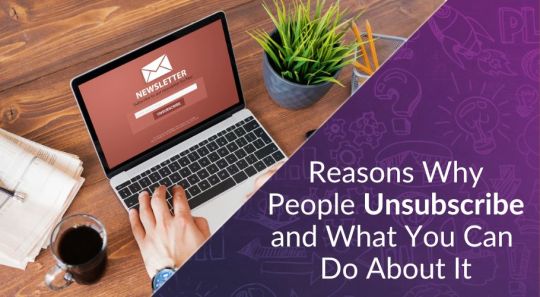
As a business owner, your mailing list is one of your most valuable resources.
This list of subscribers is essential to the success of your marketing efforts, as it offers a fast, affordable way to stay connected to your audience.
But when you send a newsletter and see that several people have unsubscribed, it can be incredibly unsettling.
When this happens, you’ll be wondering, “Why am I losing subscribers?” and you may even find yourself asking, “What’s wrong? Don’t they love me anymore?”
But you really shouldn’t take this personally.
Because in the world of email marketing, this is all too common.
For instance, as you can see from the graph below, a survey from Service Direct, which polled hundreds of small business marketers, found that the biggest challenge for email marketers is optimizing metrics, like unsubscribes.

All things considered, if people are unsubscribing from your newsletter, you’re definitely not alone, and it’s not always a bad thing.
For one thing, as much as you may want them to be, everyone is not going to be your customer.
What’s more, when someone unsubscribes, they’re saying “This isn’t for me.”
And that’s a good thing.
Because it’s better to have a small list of loyal subscribers than a long list of unresponsive ones.
Plus, doesn’t it feel good to get rid of all the tire kickers?
After all, your goal should be to create a tight list of raving fans who love, trust, and want to buy from you, not to amass subscribers regardless of whether they’re interested in what you have to offer.
That being said, if you’re losing newsletter subscribers, and you want to learn why this is happening, and what you can do about it, then take a moment and keep reading.
Read: One Big Reason Your Newsletter Open Rate is Low and What to do About it

Understanding why people aren’t opening your newsletters is just as important as understanding newsletter unsubscribes.
Like it or not, the success of your email marketing requires deep insight into these metrics and many others.
With that in mind, this article explains the importance of subject lines, as they relate to email open rates, and explores the reasons why your subscribers may be ignoring your newsletter.
Keep reading here.
Why Am I Losing Subscribers?
There are many reasons why people would choose to unsubscribe from your newsletter.
Sometimes, after people get an email or two from you, they find out that they’re just not aligned with you and your brand.
Or they don’t agree with your point of view on something.
Or maybe your content isn’t providing the type of information they’re looking for.
Moreover, many people will just sign up for your newsletter to get whatever sort of freebie you’re offering, regardless of whether they have an interest in your products or services.
And if they’re just interested in seeing what they can get for free, or they’ve unsubscribed for any of the reasons above, then you can pretty much guarantee they’re not your ideal customer.
But many other things can inspire your audience to remove themselves from your mailing list, aside from what I’ve already discussed.
So, if you’re asking yourself, “Why am I losing subscribers?” these common reasons for unsubscribing should help you figure it out:
1) You’re Emailing Too Often
Most subscribers are expecting one or two emails from you a week at the absolute max.
With that in mind, if you suddenly start sending four emails per week, people will undoubtedly find it annoying and as a result, many of them will unsubscribe, and some may even mark you as spam.
So, if you want to stop this sort of thing from happening, make sure to avoid sending your subscribers more than two emails per week.
2) You’re Emailing Too Infrequently
If you send emails sporadically or very infrequently, people will likely forget who you are, and start asking themselves, “Who is this? And how did I get on this list?”
And when people start asking those questions, it’s not long before they hit the unsubscribe button.
That being said, while emailing too often is definitely a no-no, you should also make sure you’re reaching out often enough that your audience won’t simply forget you exist.
It might take a while to find that sweet spot, but in any case, you should try to send the same number of emails each week or month, and schedule them to go out on the same days of the week and at the same times, if possible.
3) They Don’t Remember Signing Up
If you’re offering a freebie in exchange for newsletter sign-ups, you’ve got to make sure it’s absolutely clear that users are also going to be added to your weekly newsletter.
Again, you don’t want them wondering “Why am I getting this?”
One of the best things you can do to prevent this from happening is to add an opt-in confirmation to your campaign, which is a process where users must verify their email addresses by clicking on a confirmation link in an email they receive after they subscribe.
This not only helps to ensure they don’t forget they signed up but also prevents your emails from being mistaken as spam and ensures you’ve gotten subscribers’ consent to contact them.
4) You’re Too Salesy
When people subscribe to your newsletter, regardless of what they’re getting in return, chances are, they’re not looking for a sales pitch.
More likely, what they’re looking for is answers to their questions, content that addresses their problems and pain points, and other useful information that can enhance their lives.
Having said that, you should make sure to avoid being too salesy, as it’s just going to annoy people.
It’s okay to promote your products or services to your audience every once in a while, or include some calls to action in your newsletter or articles.
But you have to find the right balance between free valuable information and promotional materials.
Because if people feel like all you do is try to sell them stuff, then that’s not what they signed up for, and as a result, they’ll be more likely to unsubscribe.
5) Your Newsletters Aren’t Relevant
Regardless of what industry you’re in, if you want your email marketing efforts to be successful, you’ve got to understand the wants, needs, problems, and pain points of your audience.
This will allow you to understand what your audience is expecting from you, speak to that audience in a way that deeply resonates with them, and ensure your newsletters are directly relevant to the people who are reading them.
For instance, if you send out a newsletter for work-at-home moms, they’re not looking for articles about potty training because that’s not relevant to them.
They signed up for your newsletter to get tips on working from home, growing their business, or boosting their income, not how to raise their children.
So, you should make sure to think long and hard about what you’re including in your newsletters, and whether or not it will be of value to your subscribers.
Because if you’re not giving them what they thought they signed up for, it’s only a matter of time before they unsubscribe.
6) Your Newsletters Don’t Display Properly
In today’s world, the majority of your audience will probably be using smartphones and tablets to check their emails.
And if your newsletter doesn’t display properly on these devices, they may end up unsubscribing.
That being said, you should make sure to send your newsletter out in both its plain text and HTML forms.
This way, even if a subscriber’s email client can’t display all your beautiful imagery, they can still read the textual version of your email.
Furthermore, you should always send a test email and check it on all your devices (preferably phone, tablet, and PC) to see how it displays, so you can make any necessary adjustments before it goes out to your entire list.
Tips for Reducing Email List Unsubscribes
Now that you have a better understanding of why people unsubscribe from email lists, you’re probably just itching to learn what you can do to stop this from happening.
With that in mind, below I’ve provided several tips for reducing email list unsubscribes:
Segment Your Audience
One thing you can do to reduce the number of unsubscribes you’re getting is to segment your subscribers based on their interests, demographics, or behaviour.
This allows you to send targeted content to specific segments, which has been shown to increase relevance and engagement, reducing the likelihood of unsubscribes.
Provide Valuable Content
Quality content is what builds trust and keeps subscribers engaged.
And that means ultimately, the value of your content will be the deciding factor in whether or not your newsletter succeeds.
So, make sure your newsletter contains valuable and relevant content that solves subscribers’ problems and fulfills their needs, while also sharing industry insights, tips, how-to guides, or exclusive offers that you know will resonate with your audience.
Personalize Your Content
You can use data on things like past purchases, browsing history, or survey responses to personalize your newsletter for each of your subscribers.
Personalization fosters a sense of connection and makes subscribers feel valued, as it allows you to address them by name and tailor content based on their preferences, making it less likely that they’ll unsubscribe.
Optimize Email Frequency
If you want to avoid annoying your subscribers, you’ve also got to find the right balance between staying top-of-mind and stuffing their inboxes.
To do that, you should monitor engagement metrics like open rates and click-through rates to determine the optimal frequency for sending your newsletters and then test different frequencies to see what works best for your audience.
Use Compelling Subject Lines
If you want people to open your emails, you’ve got to craft attention-grabbing subject lines.
Otherwise, your emails may get buried before anyone even notices them.
You can do this by experimenting with different formats, such as questions, lists, or urgency-based phrases, to pique curiosity and inspire people to open your emails.
But make sure to avoid clickbait tactics, as they may lead to more unsubscribes.
Optimize the Design of Your Emails
No matter what your newsletter is about, your emails should align with your brand while being visually appealing and mobile-responsive, which means they’ll adapt to different screen sizes and look great on any device.
In any case, make sure to use a clean layout, eye-catching images, and clear calls to action to guide subscribers’ attention, so you can make it easy for them to consume your content and take the kind of action you want them to take.
Respect Subscribers’ Preferences
You should allow subscribers to customize their email preferences, including the frequency and content types they prefer.
Offering the option to opt down rather than opt out completely by choosing to receive fewer emails, for instance, respects subscribers’ preferences, reduces frustration, and encourages them to stay subscribed.
Set Clear Expectations
You also want to make sure you’re setting clear expectations during the sign-up process regarding the type and frequency of emails that subscribers will receive.
So, make sure to avoid surprises by only delivering what you promised and maintaining consistency in your communications.
This kind of transparency builds trust and reduces the likelihood of unsubscribes.
Monitor and Analyze Metrics
Regularly monitoring key email metrics, such as unsubscribe rates, open rates, and engagement levels allows you to analyze trends and patterns, so you can identify areas for improvement and adjust your email strategy accordingly.
One good thing you can do is to implement an unsubscribe survey, which asks people why they’re unsubscribing.
Not everyone will answer honestly, or at all, but any feedback you do get will help you to understand the reasons why people are unsubscribing and address any common concerns.
Re-engage Inactive Subscribers
Another thing you can do is to implement re-engagement campaigns targeting inactive subscribers.
You can send them personalized emails with special offers, surveys, or compelling content to rekindle their interest, giving them a reason to re-engage with your brand before they decide to unsubscribe.
Are you still asking, “Why am I losing subscribers?” Why not set up a free 30-minute consultation with me to find out how we can help?
To your business success, Susan Friesen
0 notes